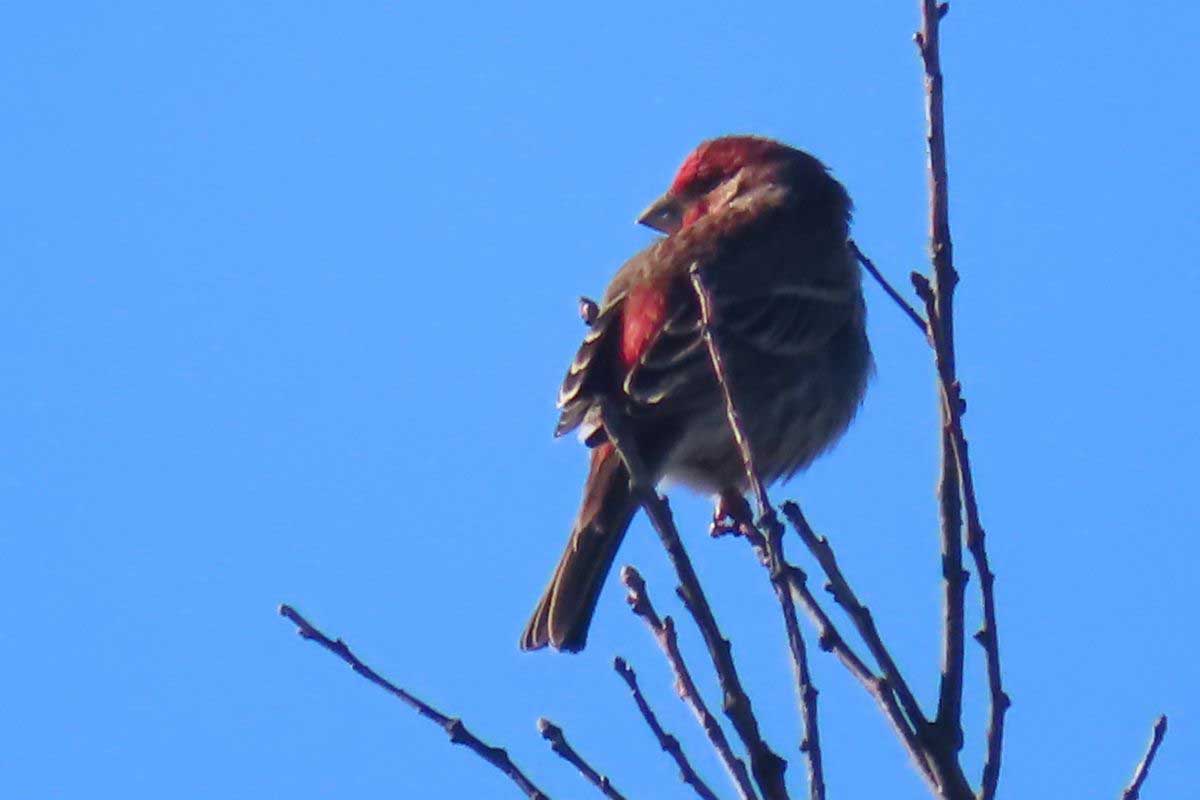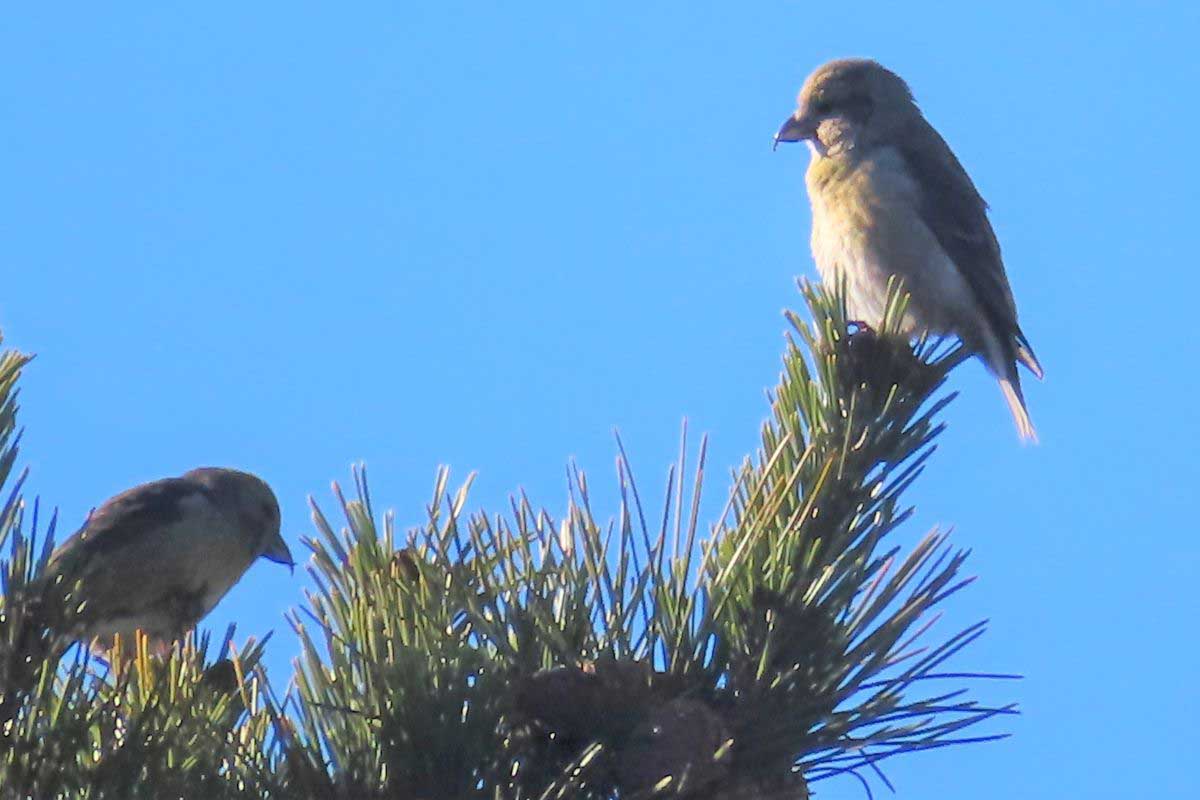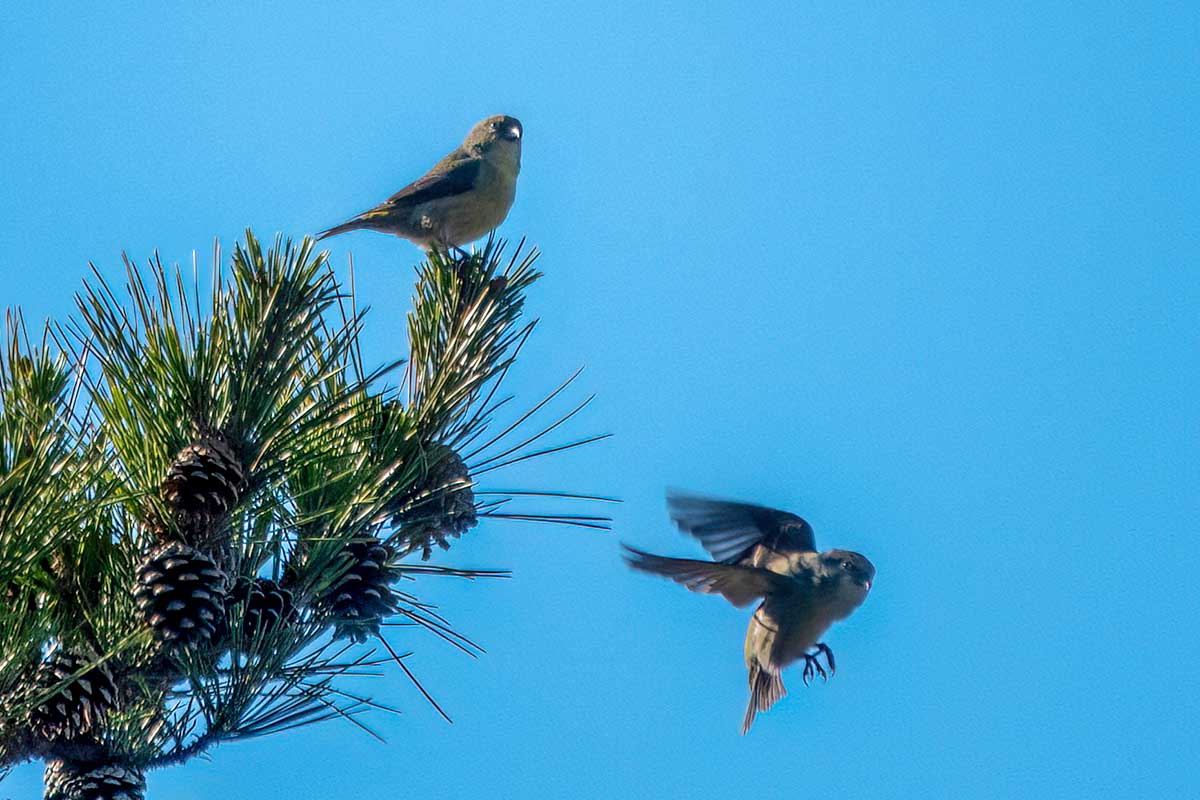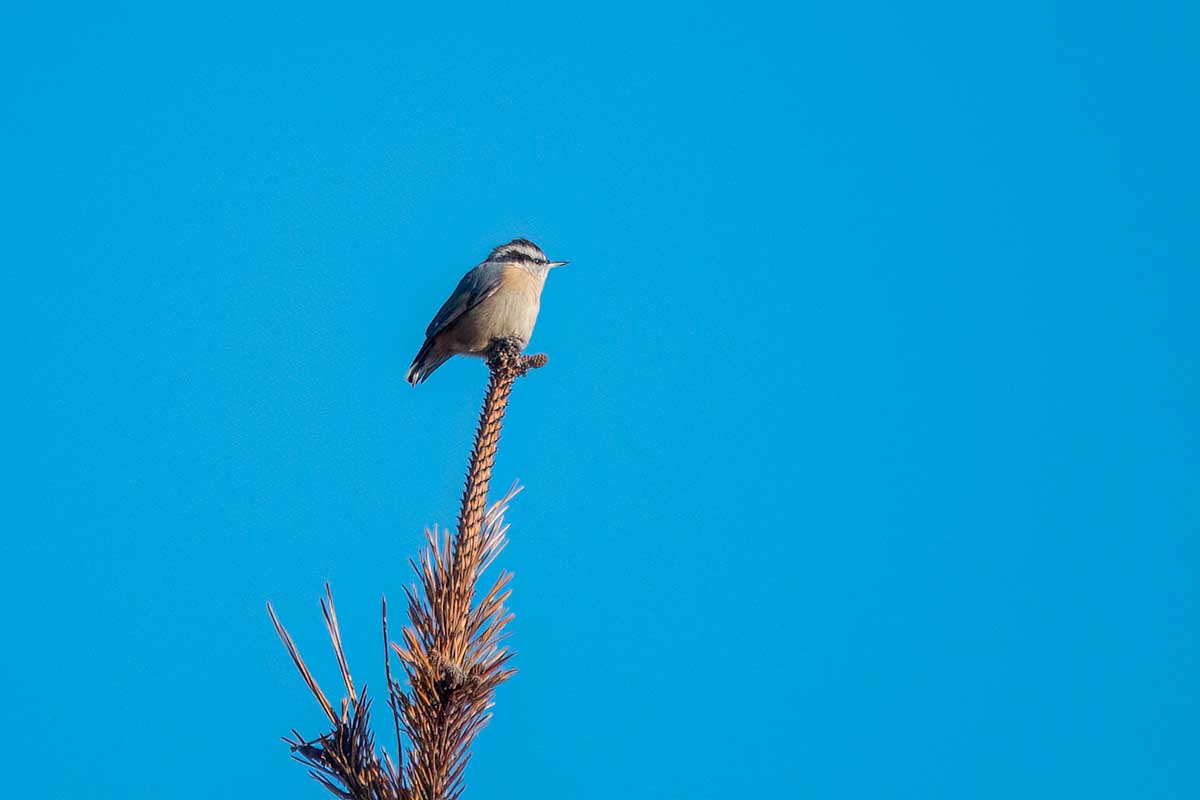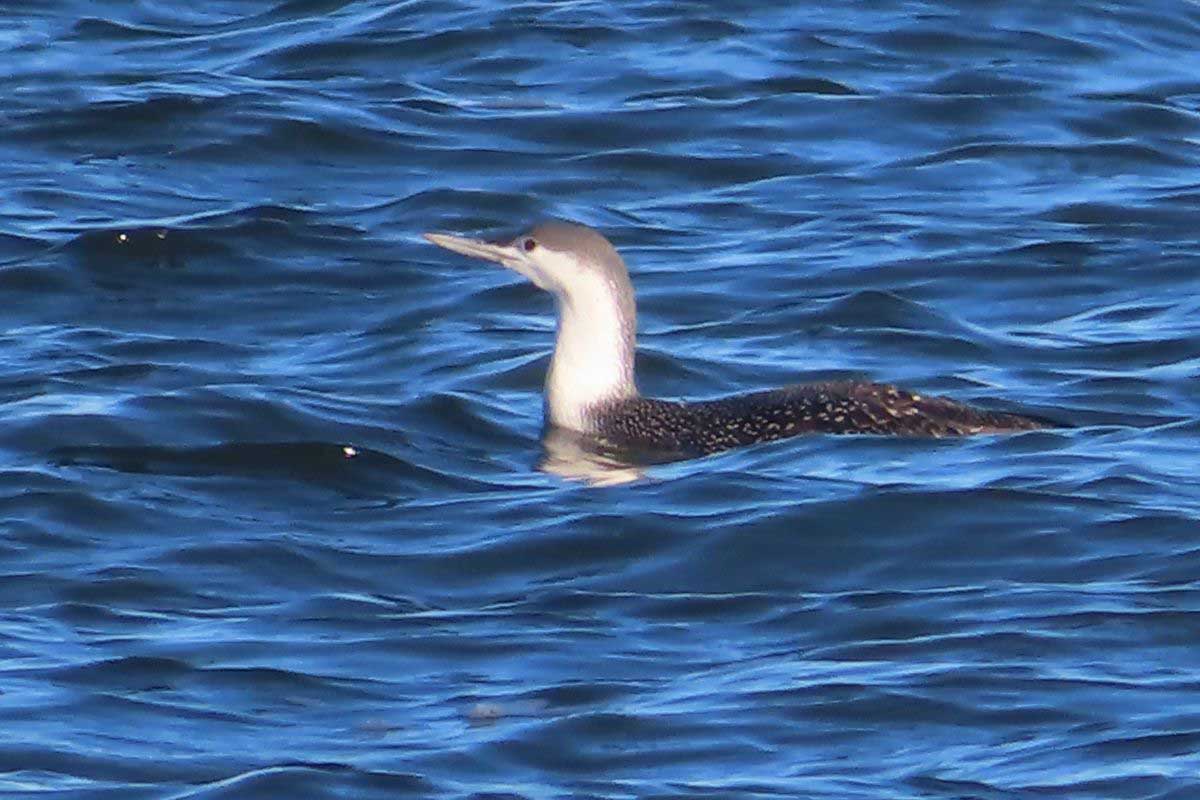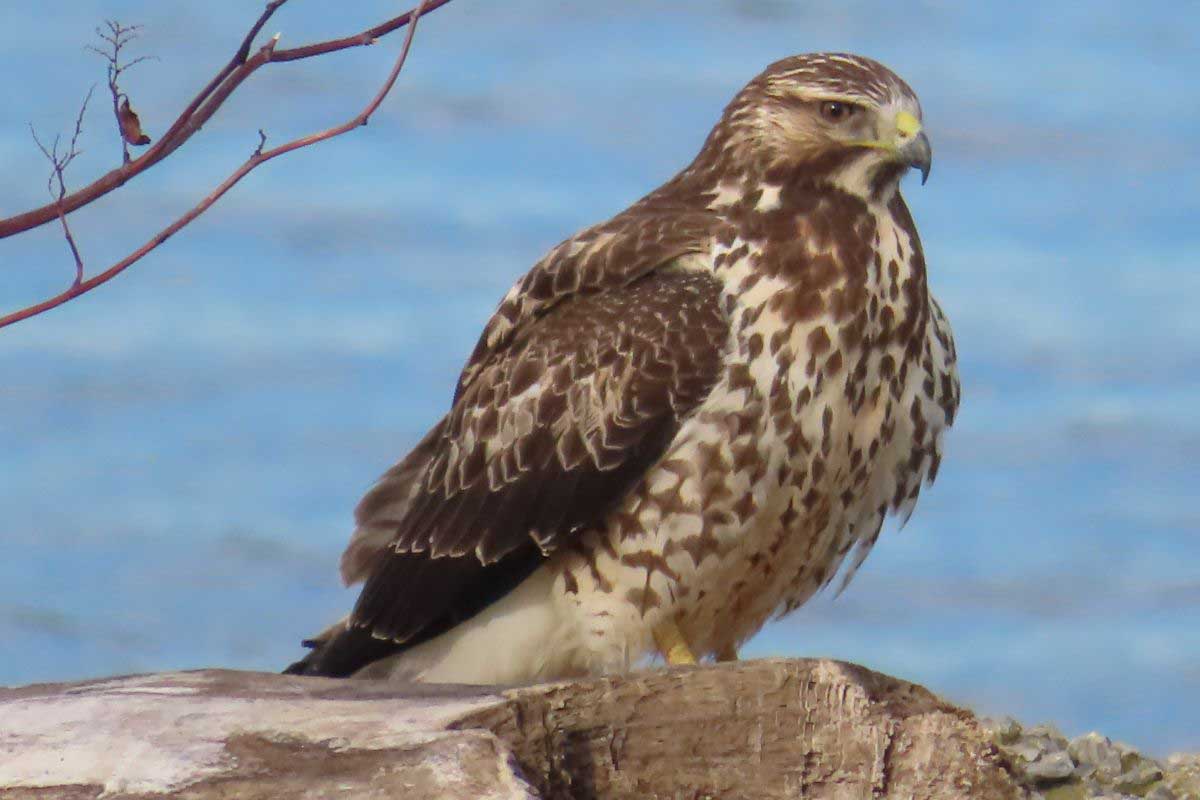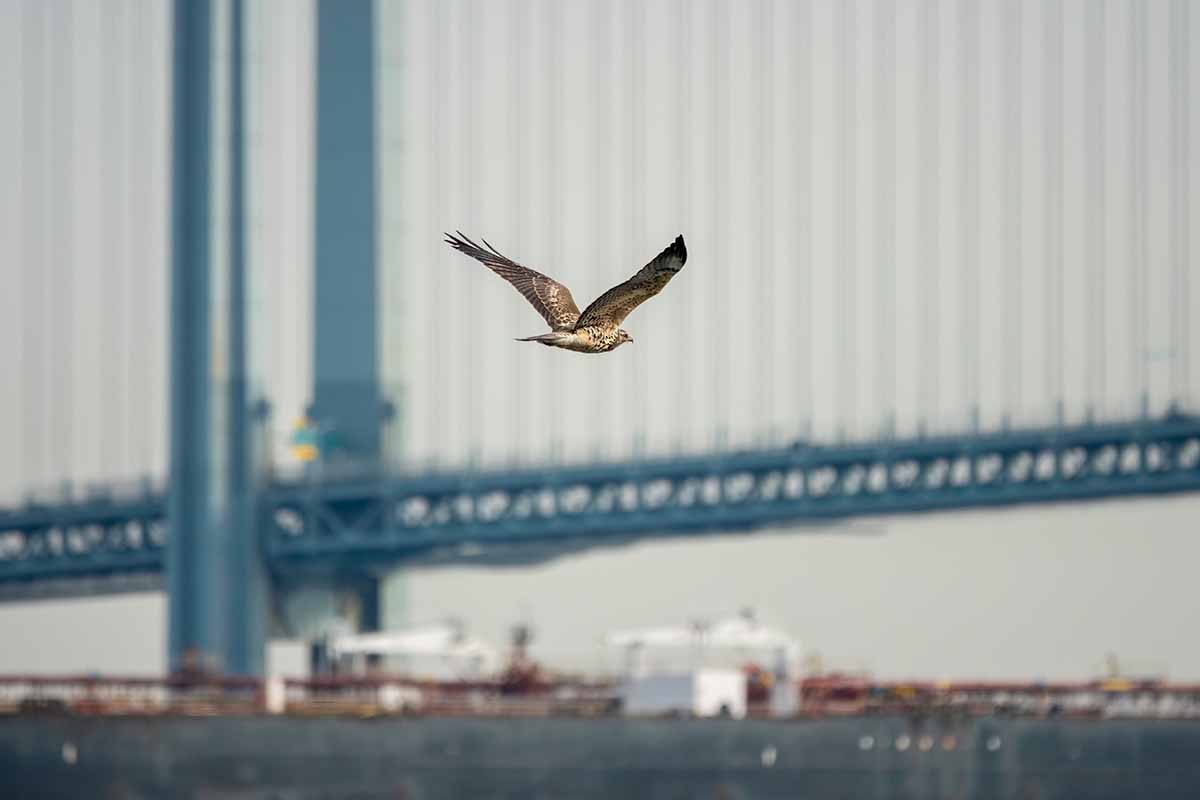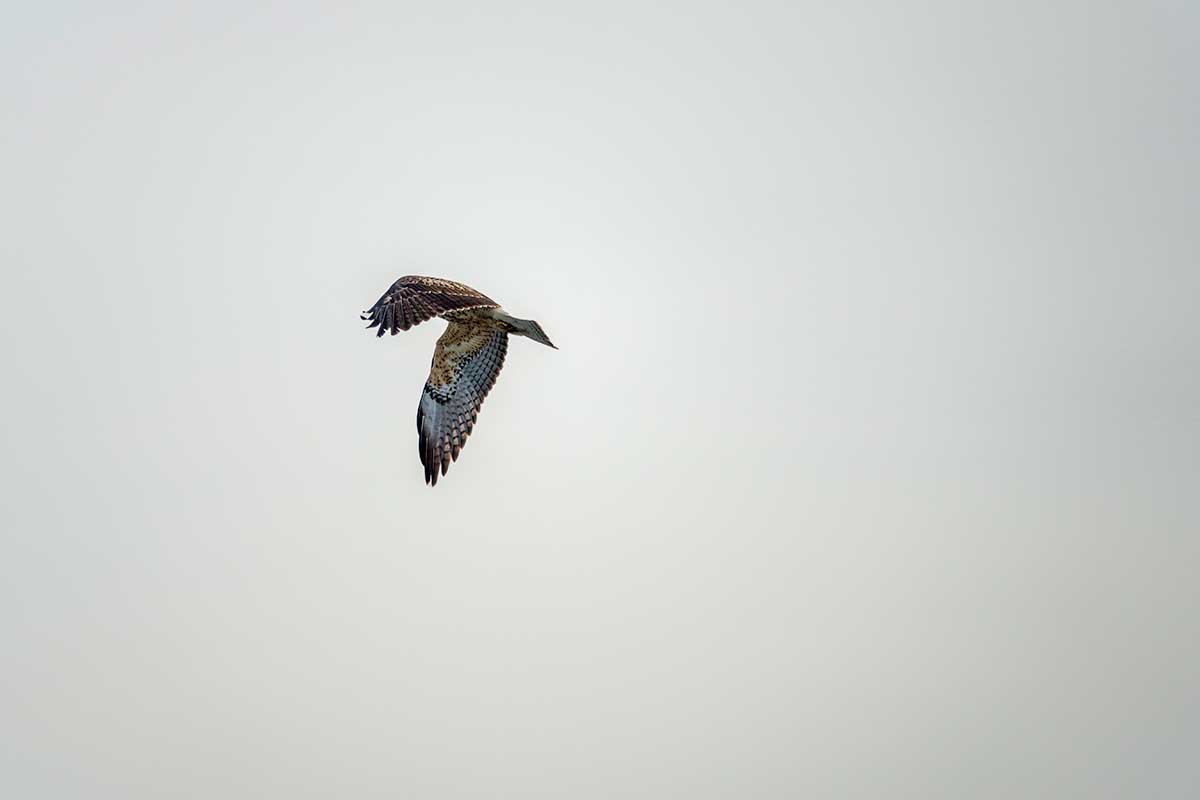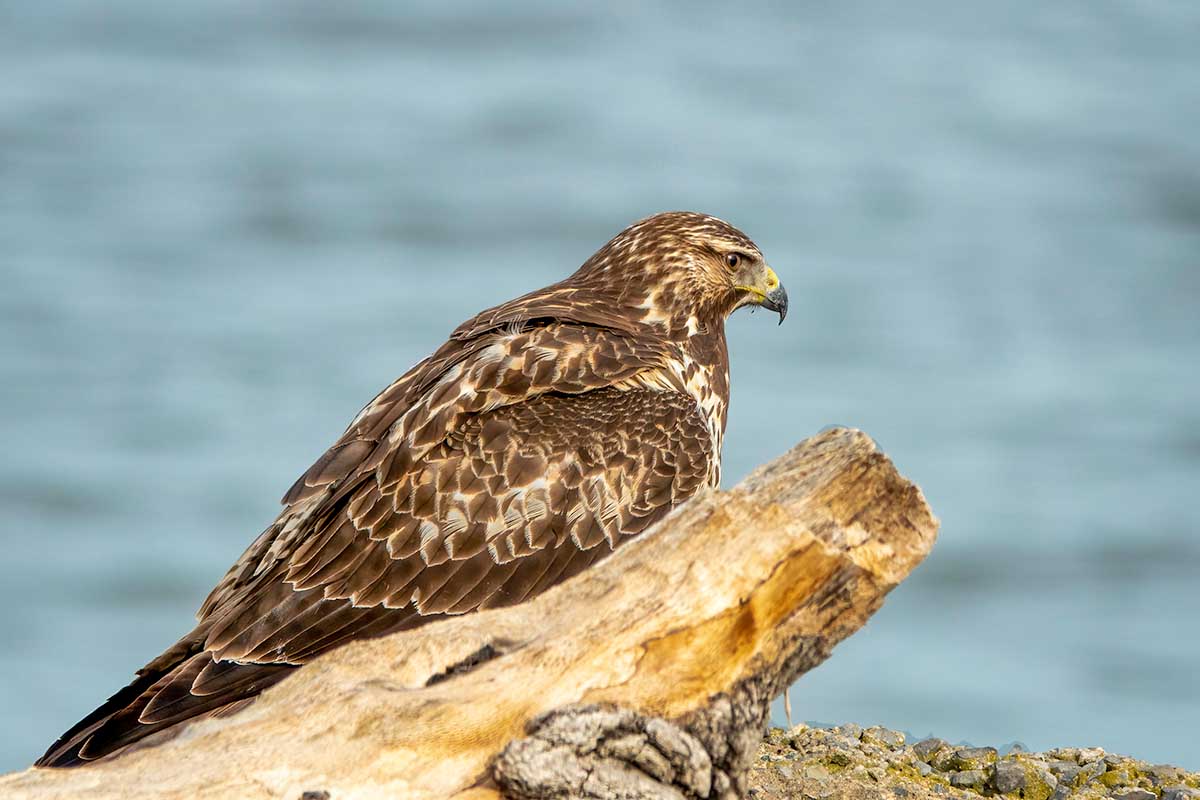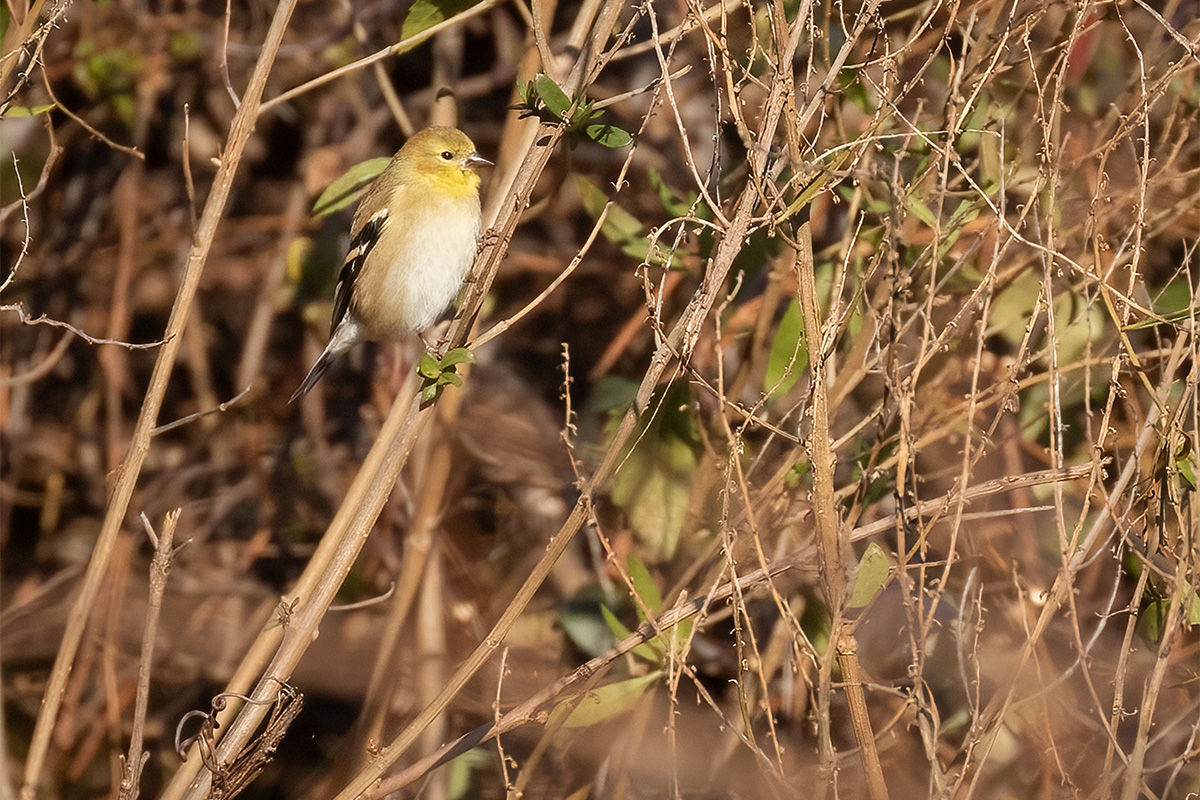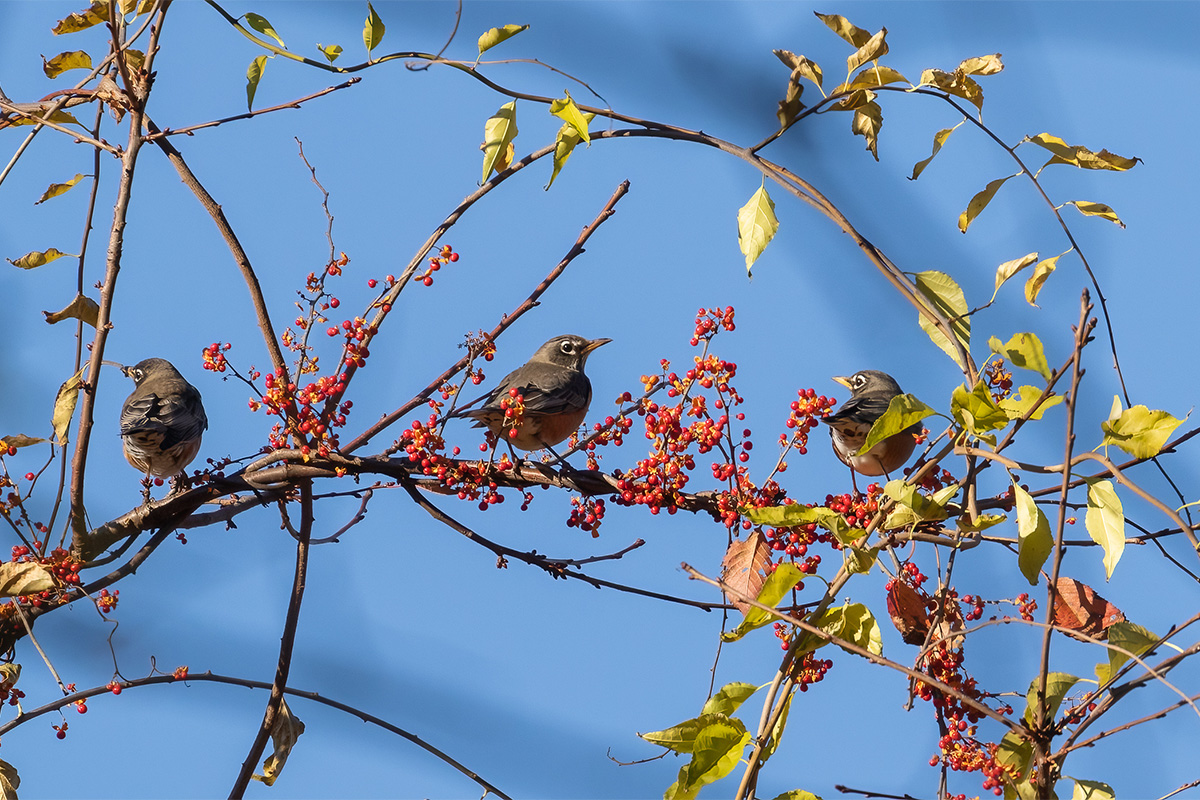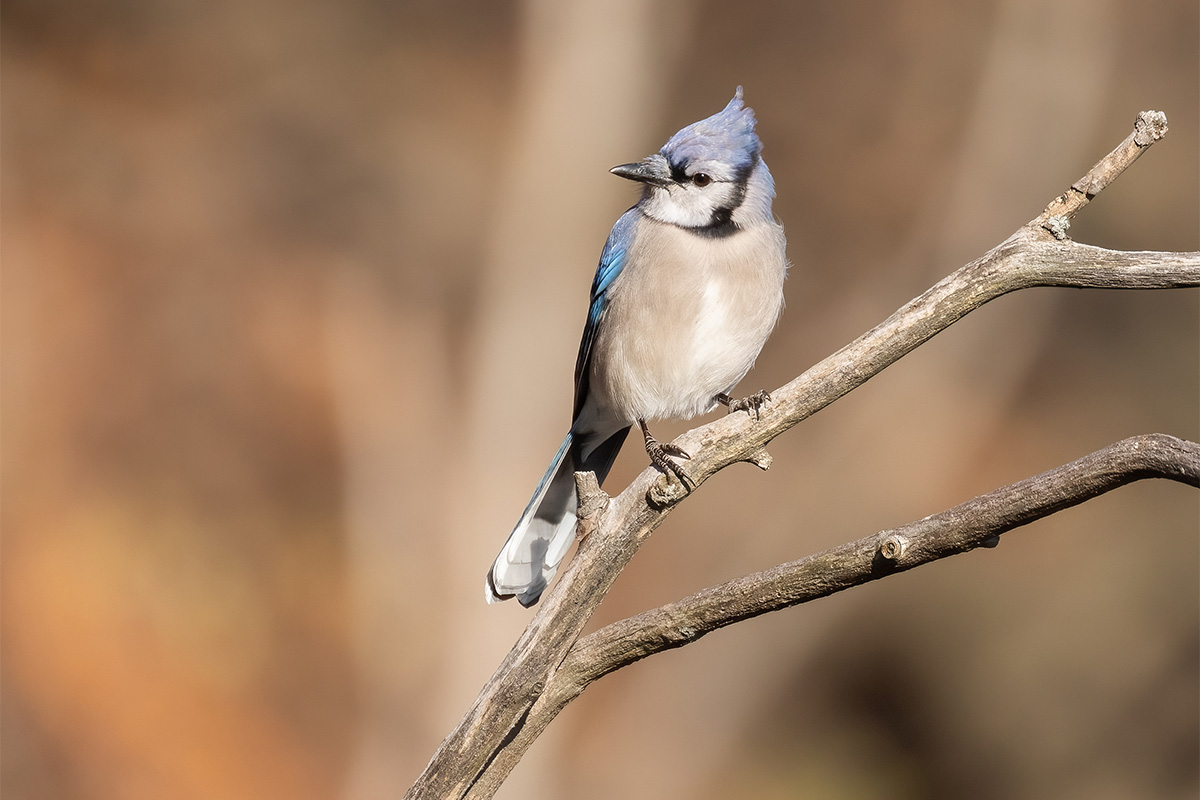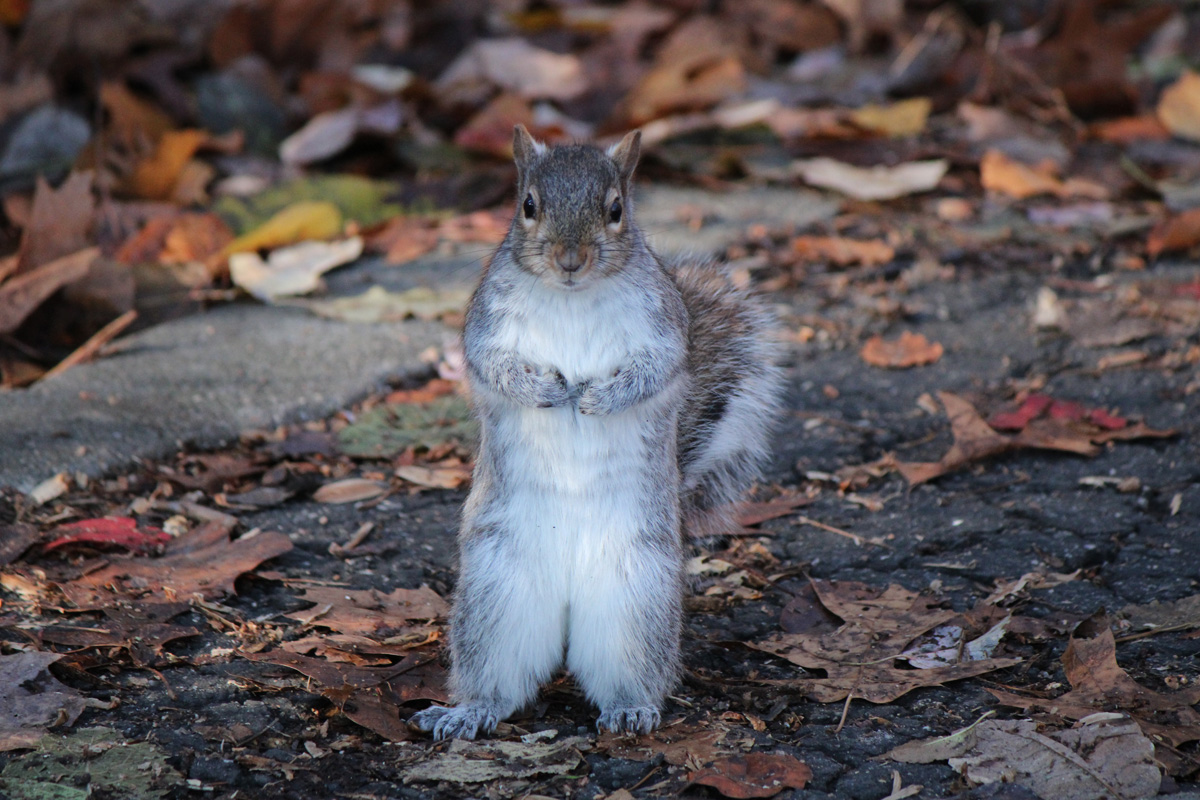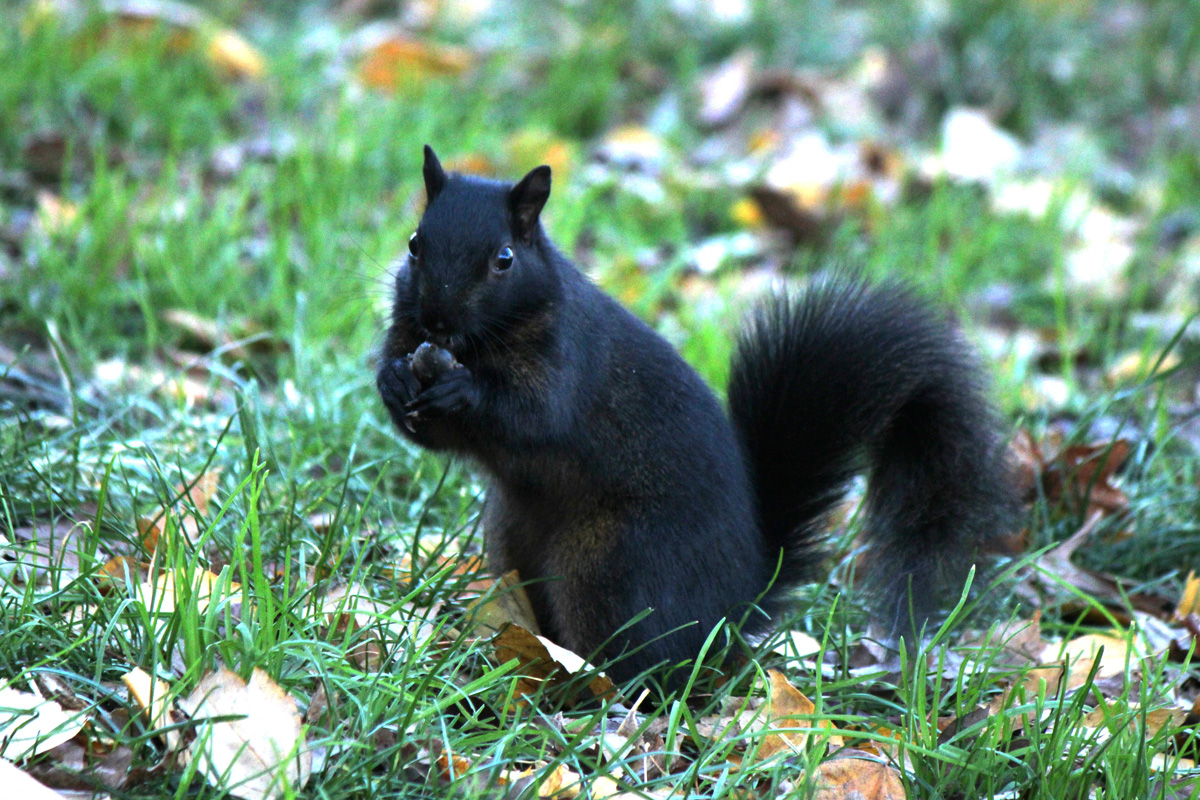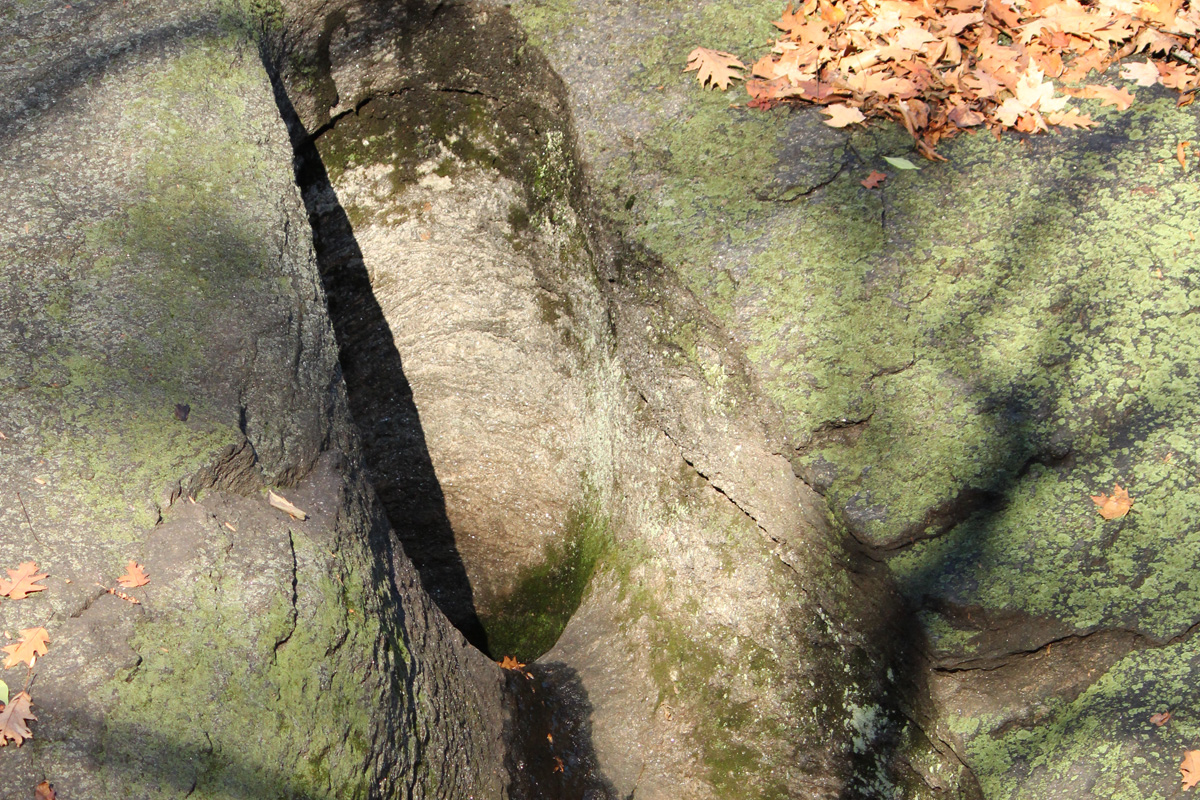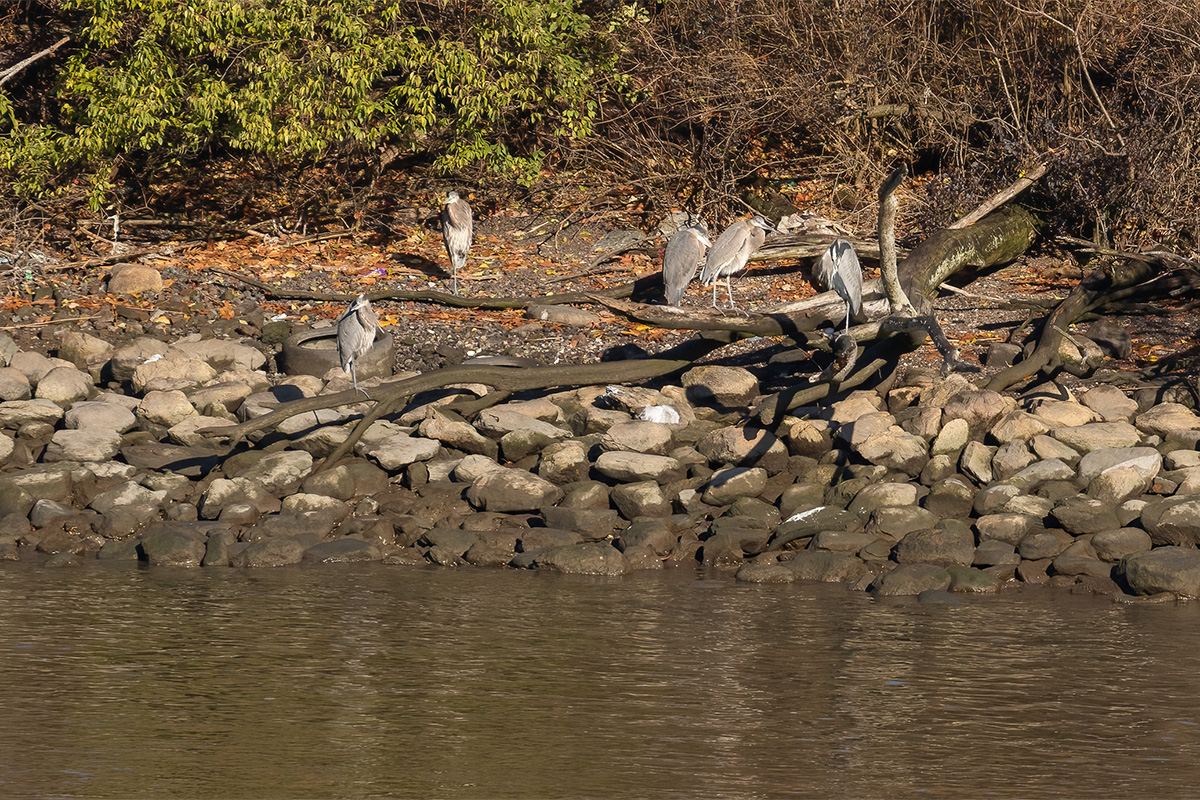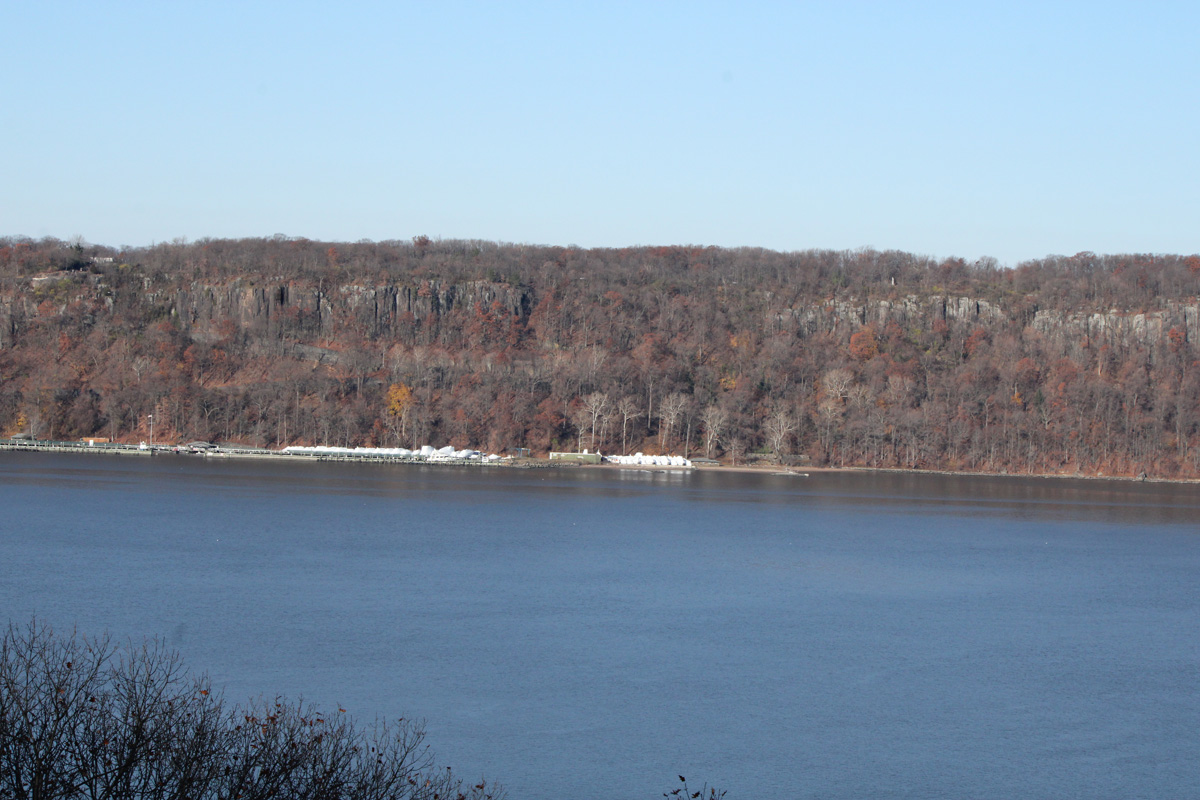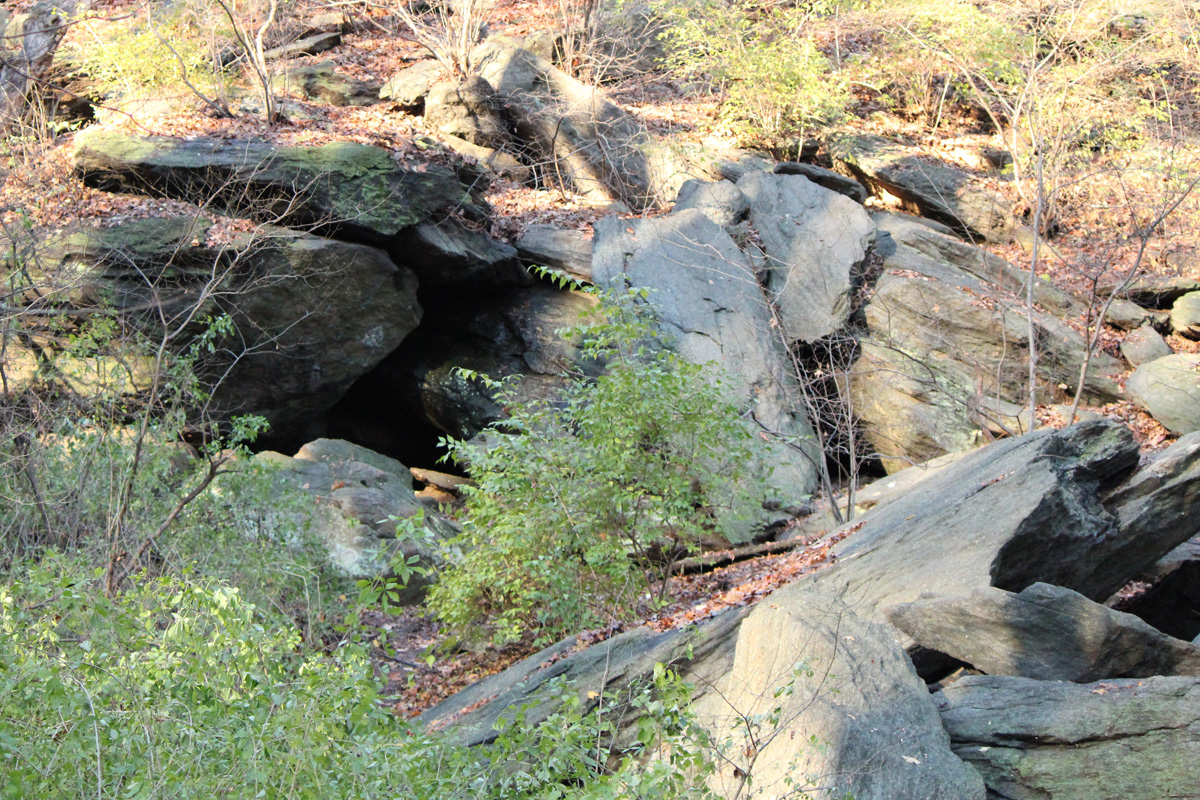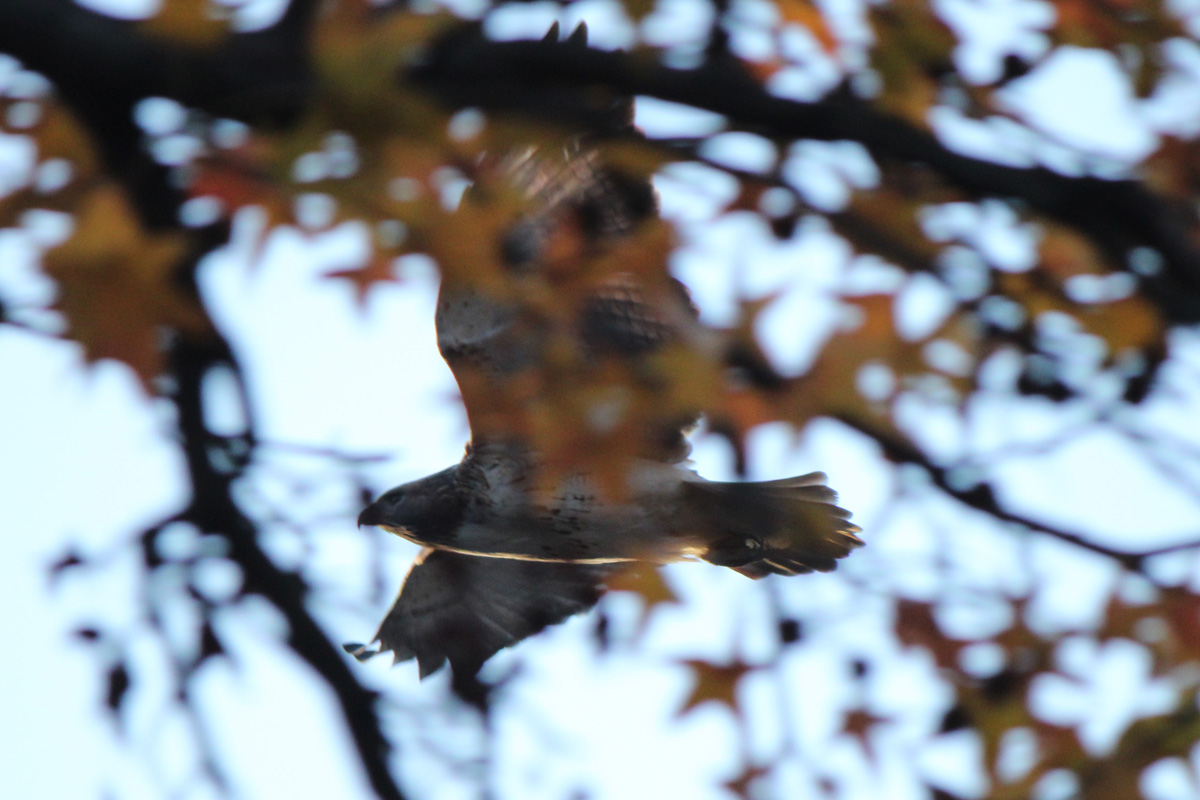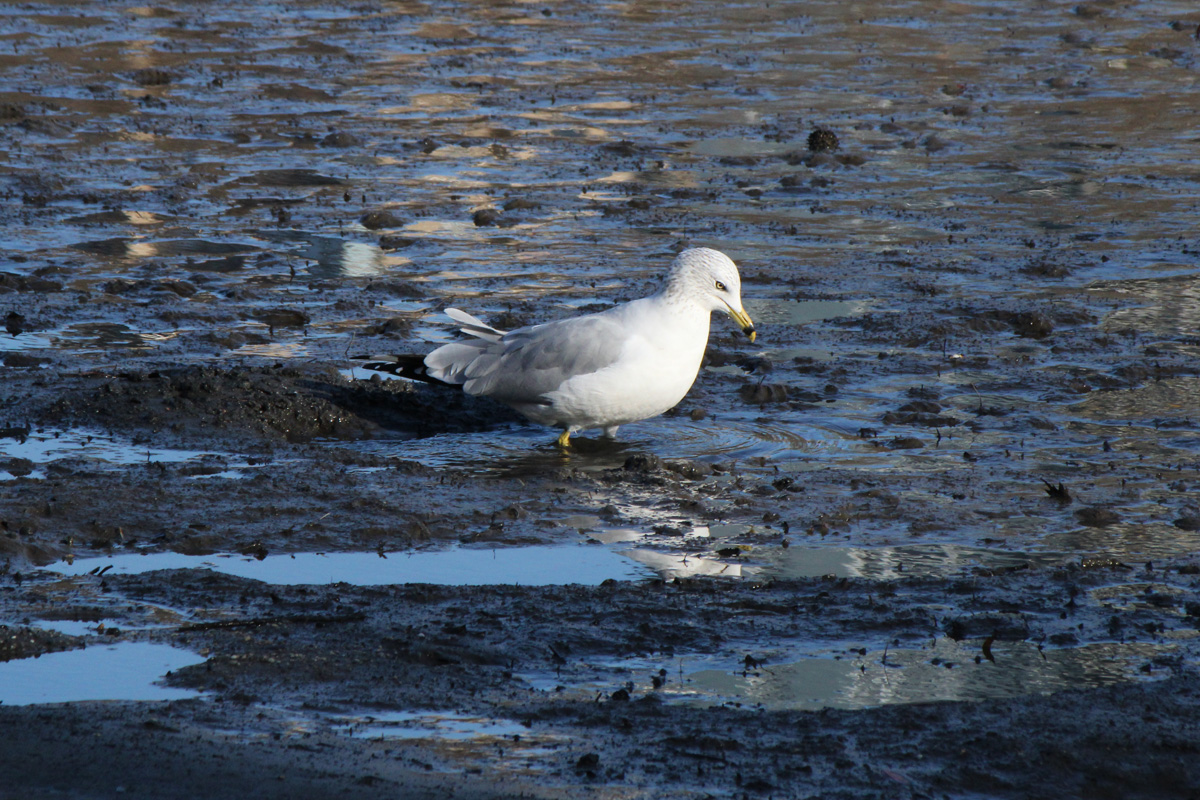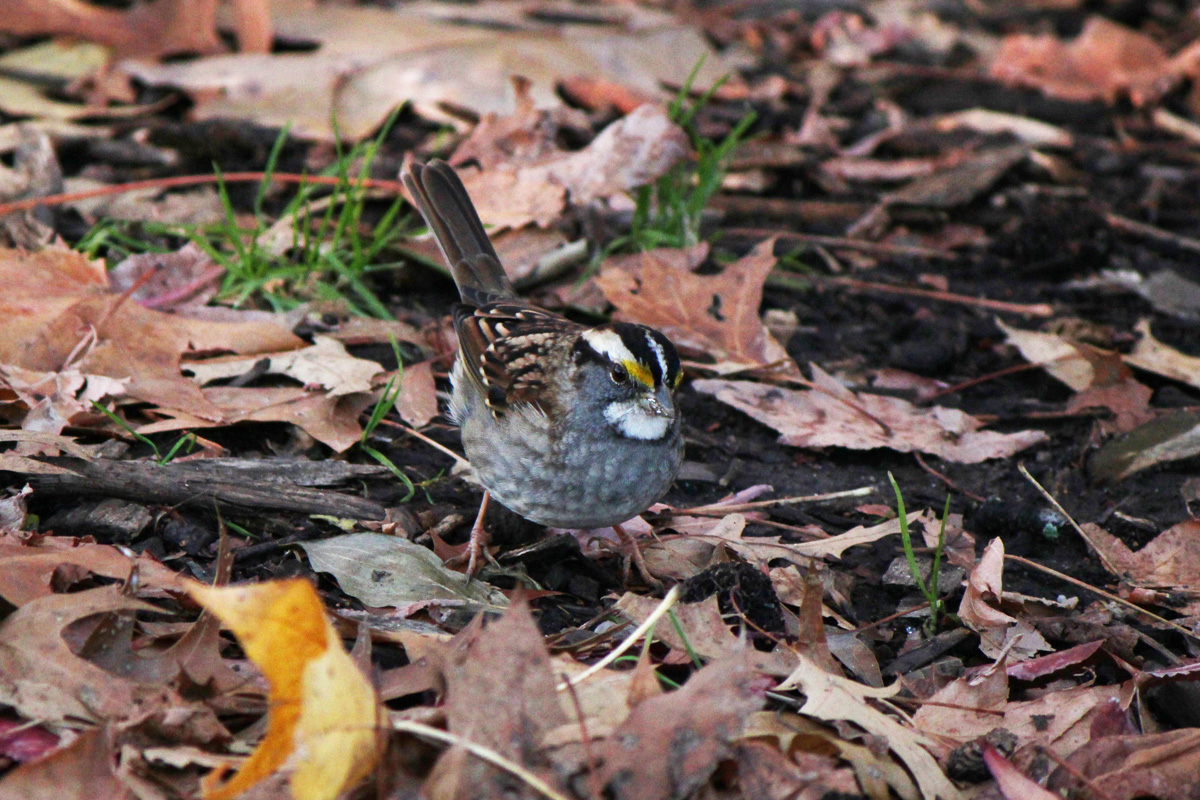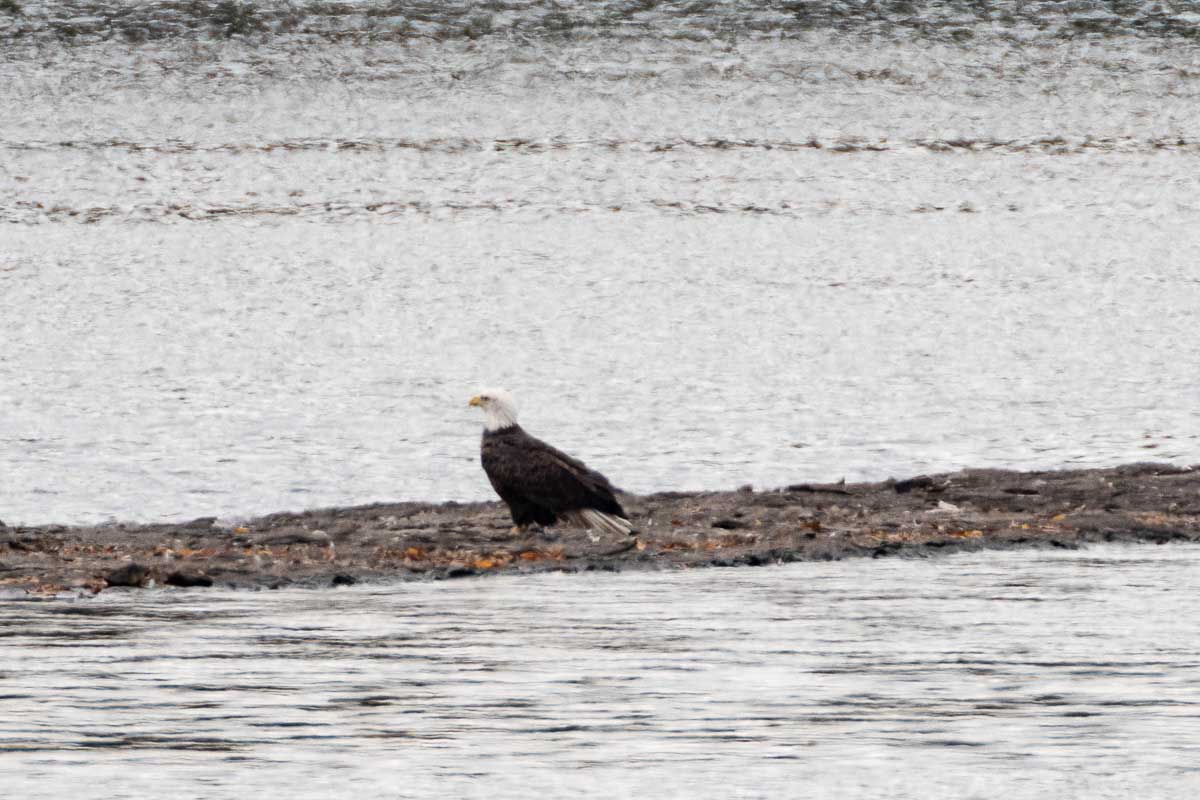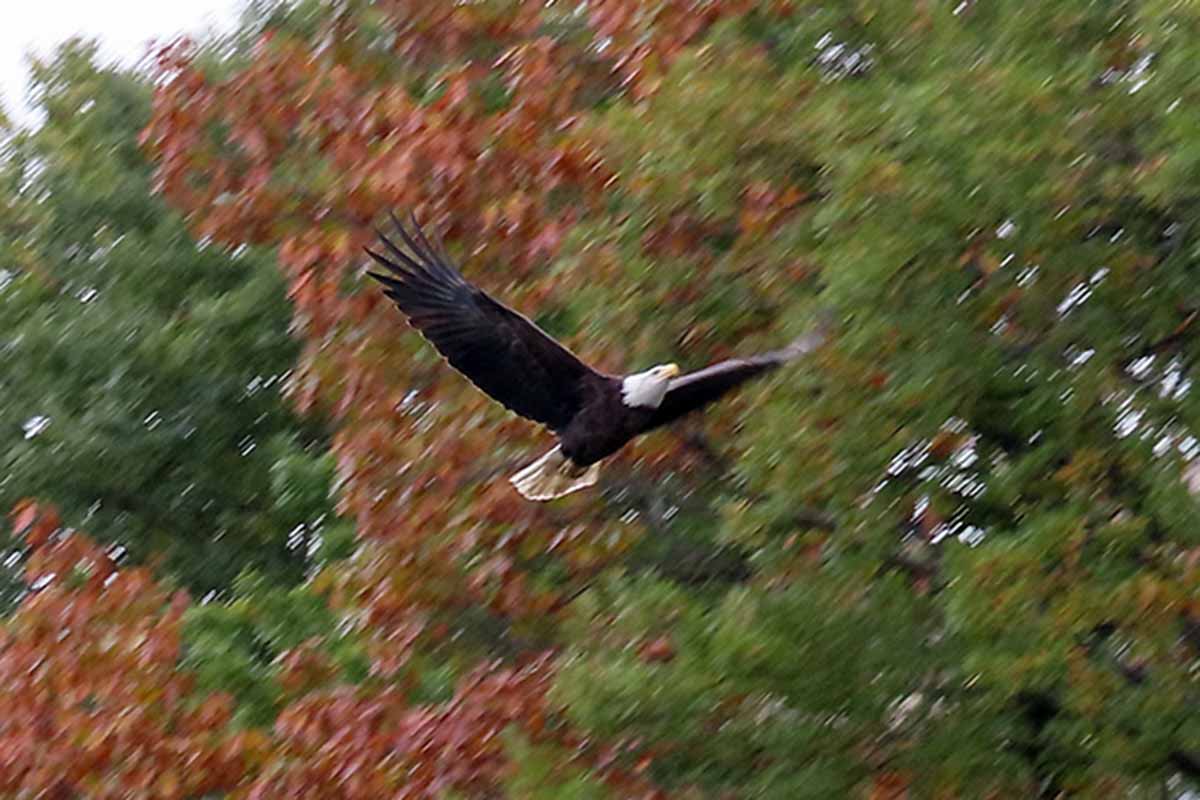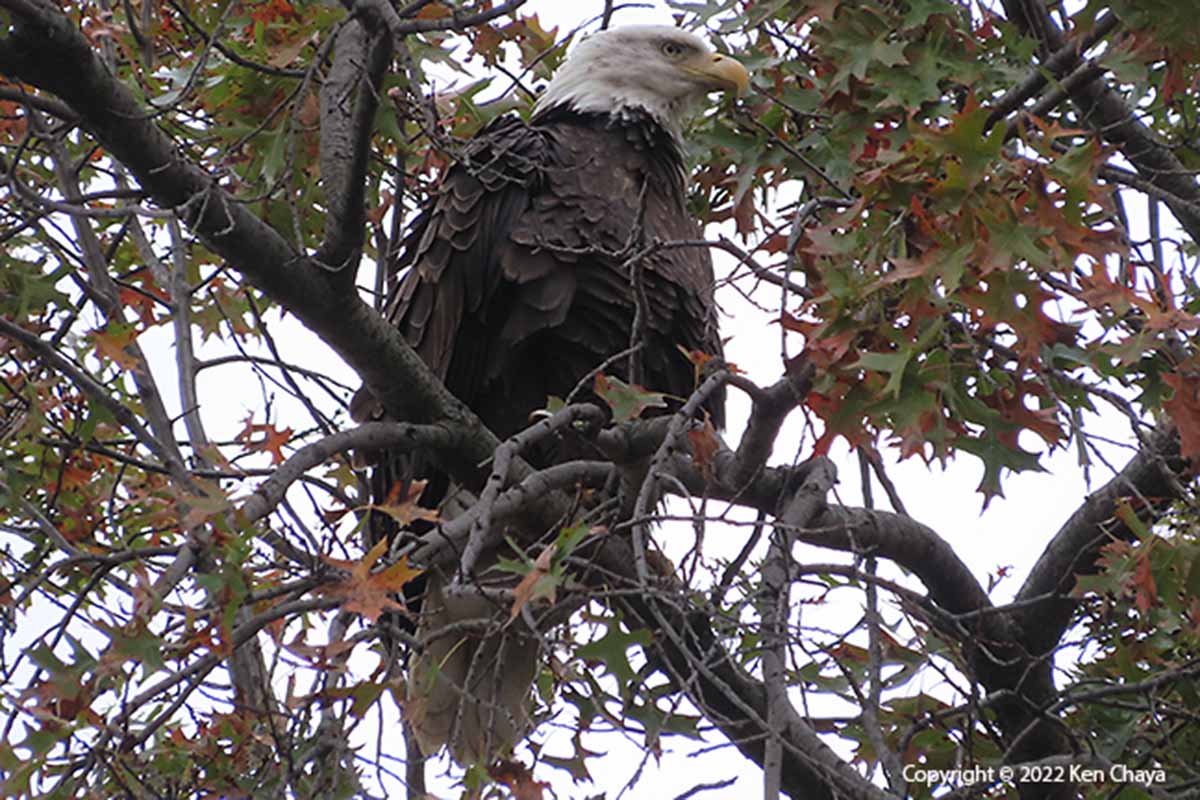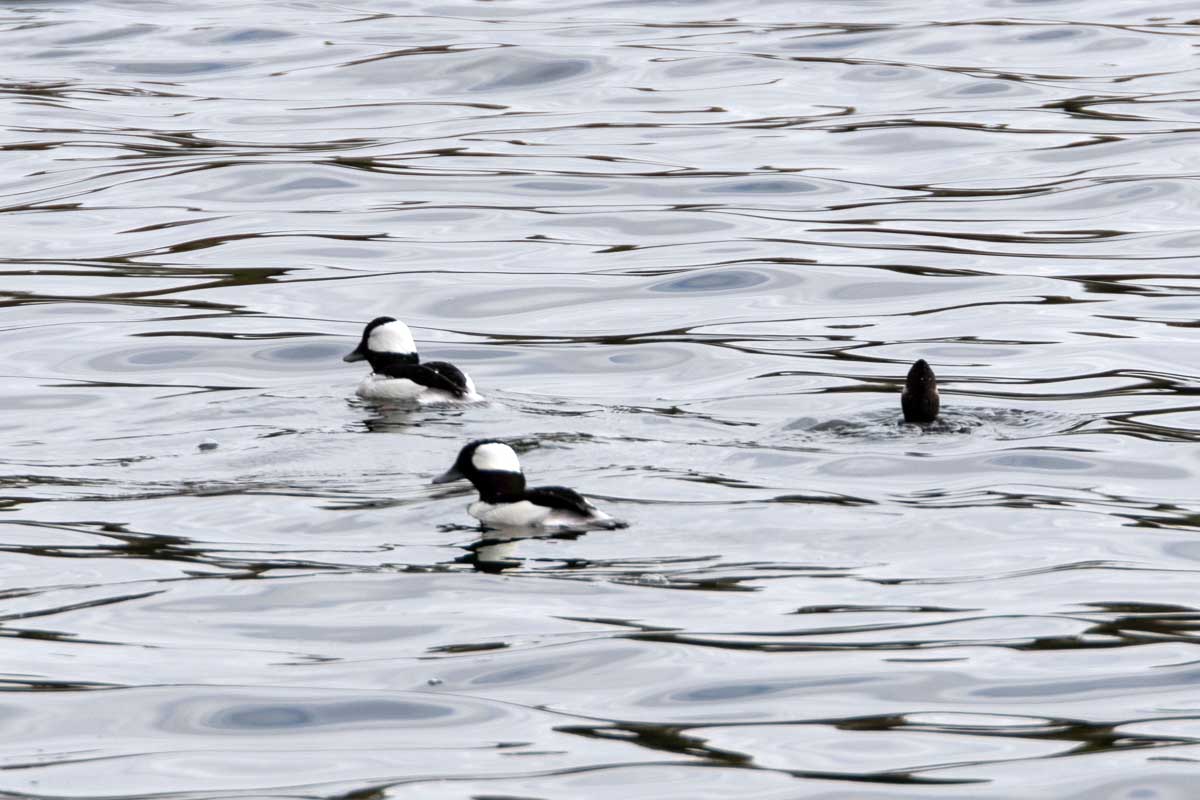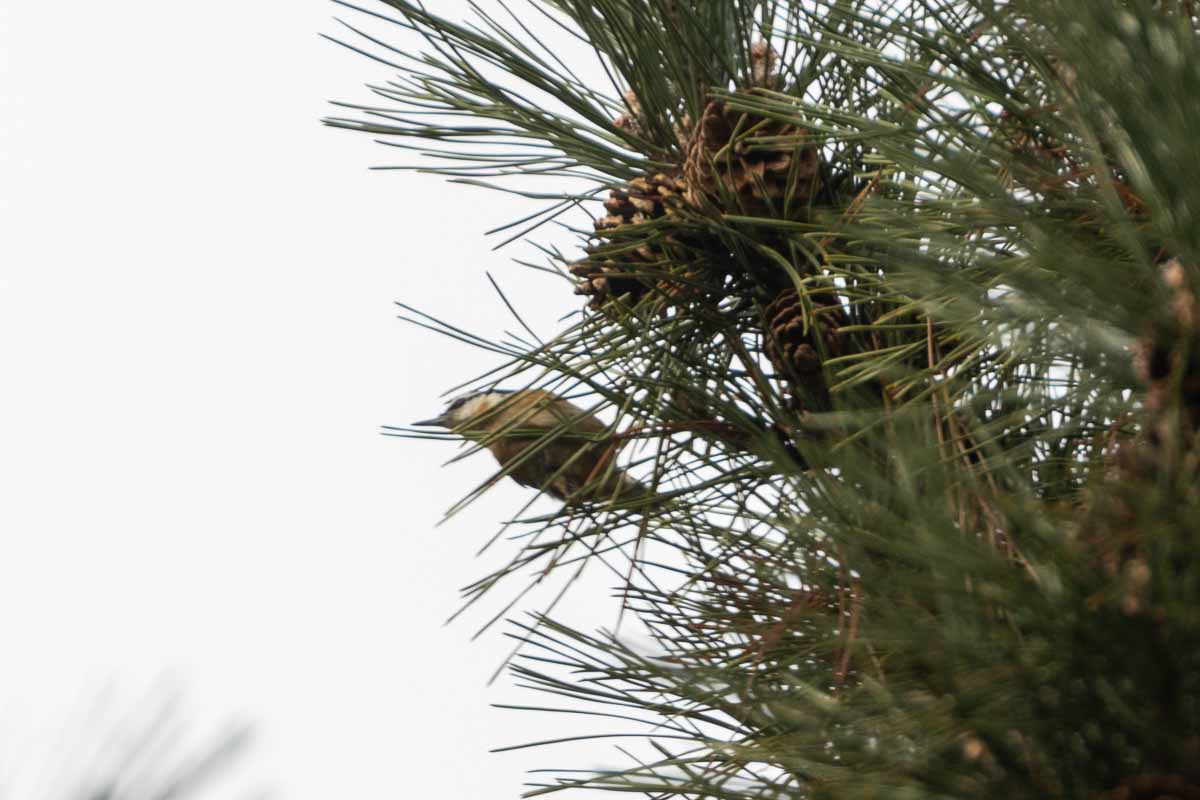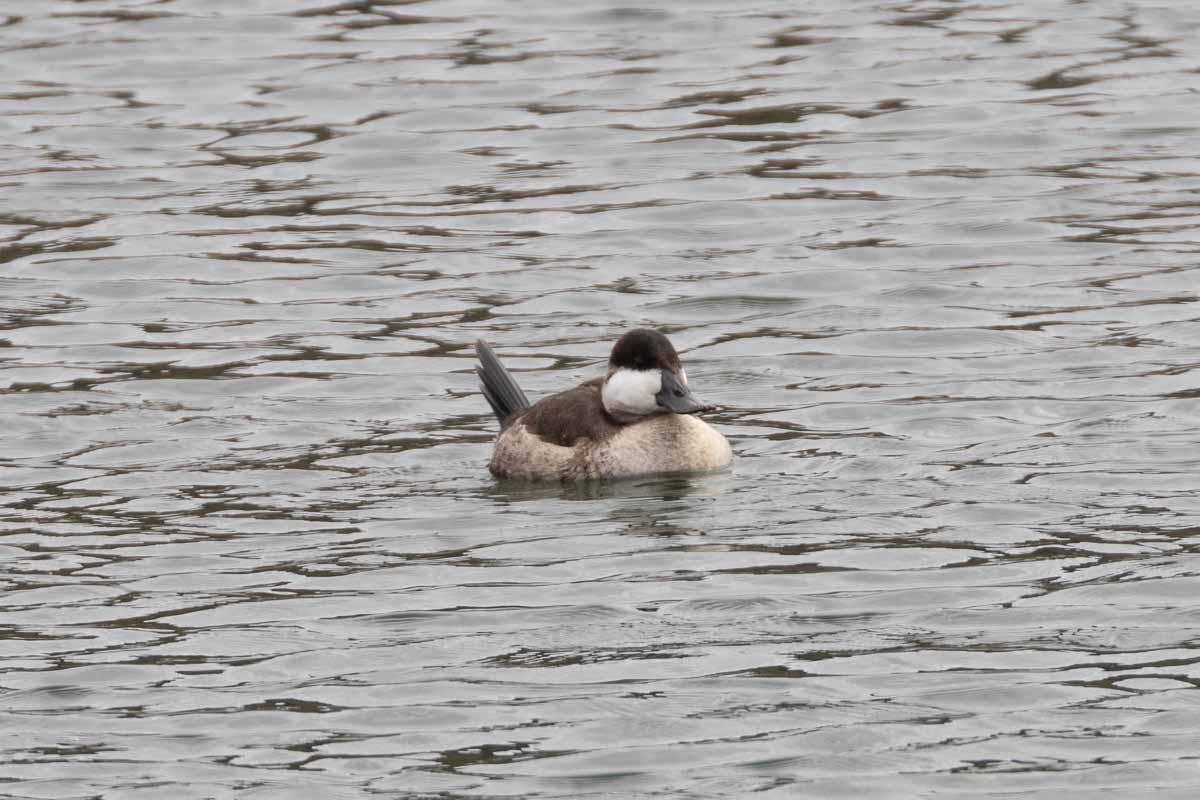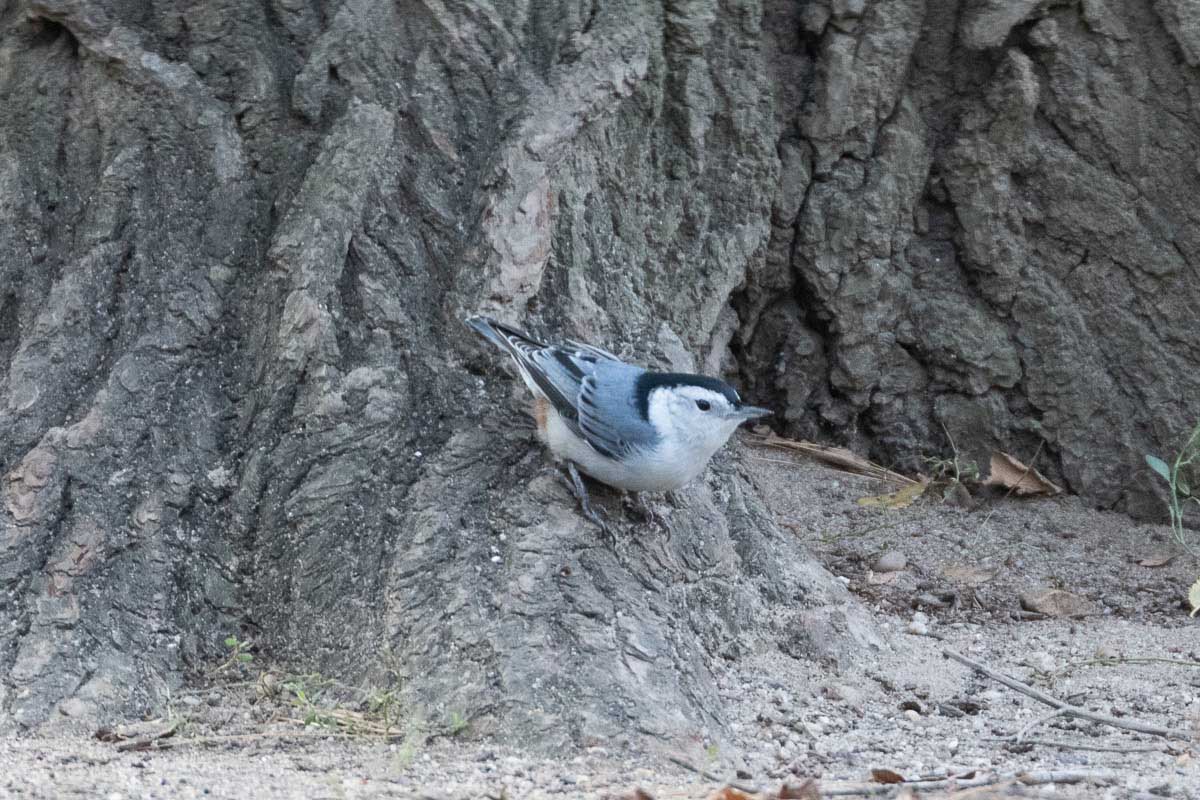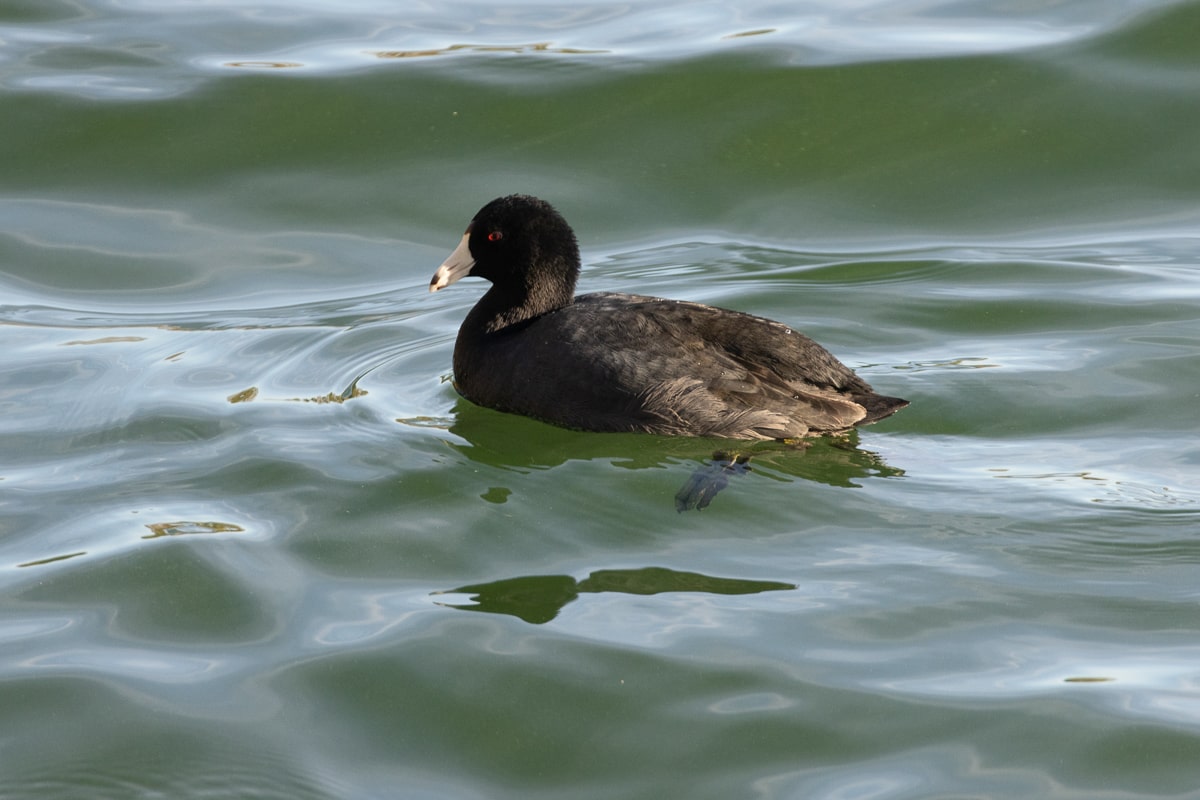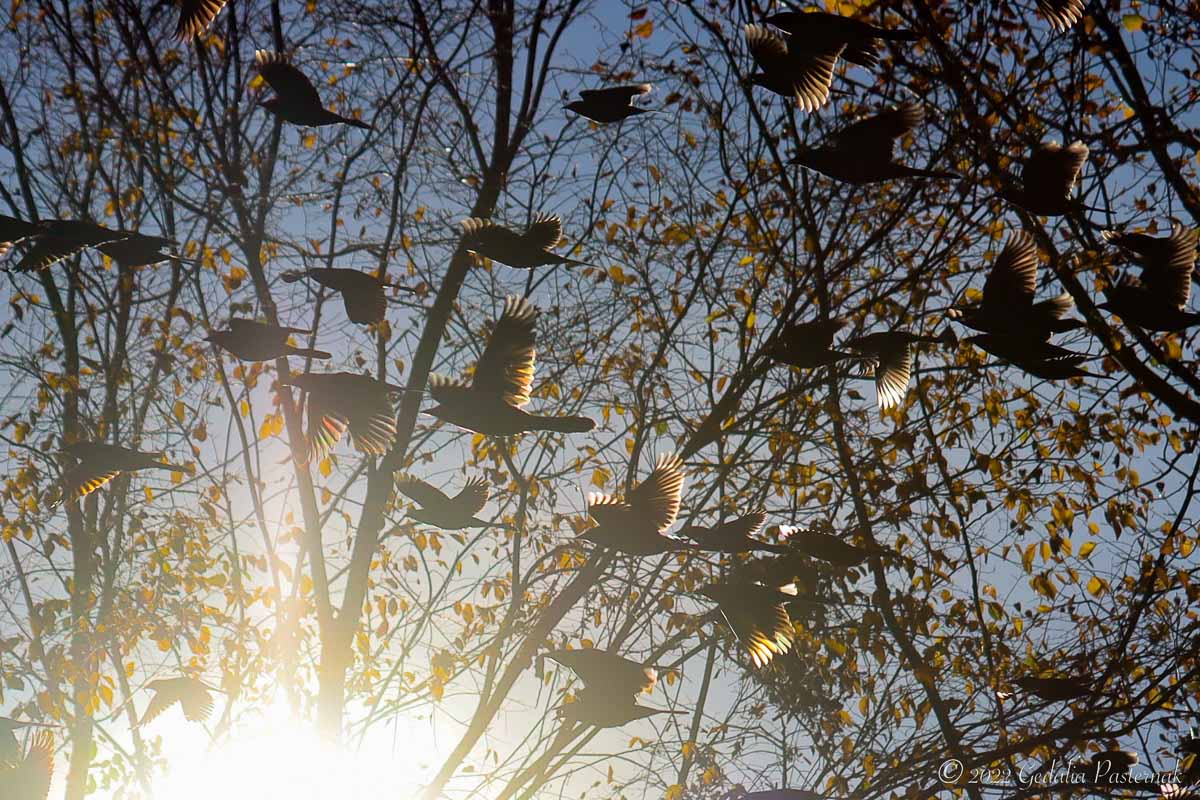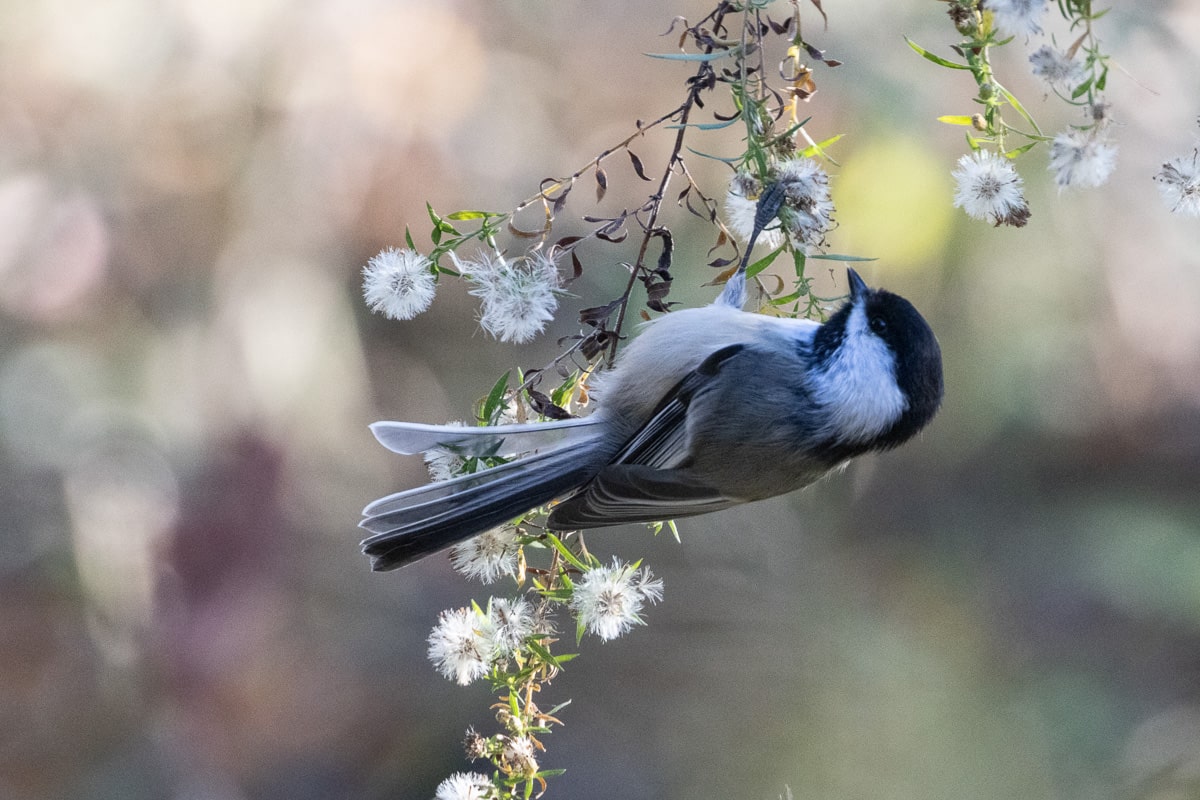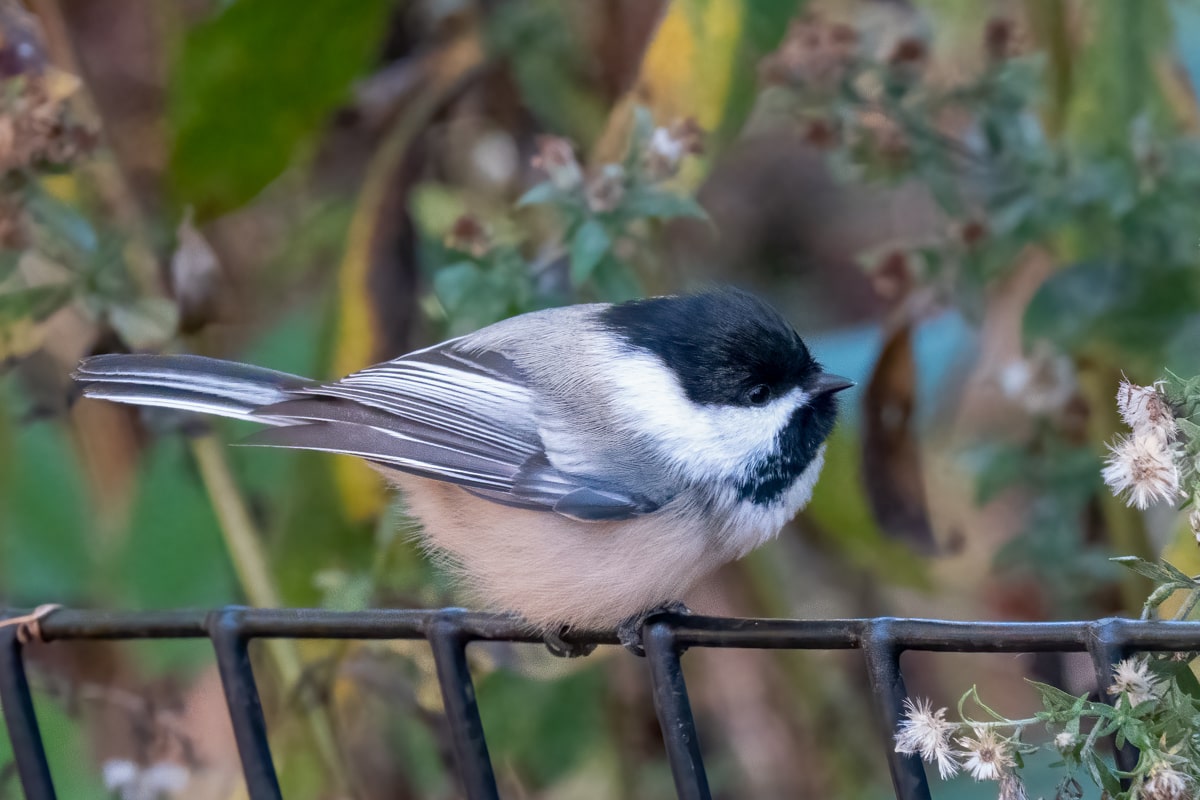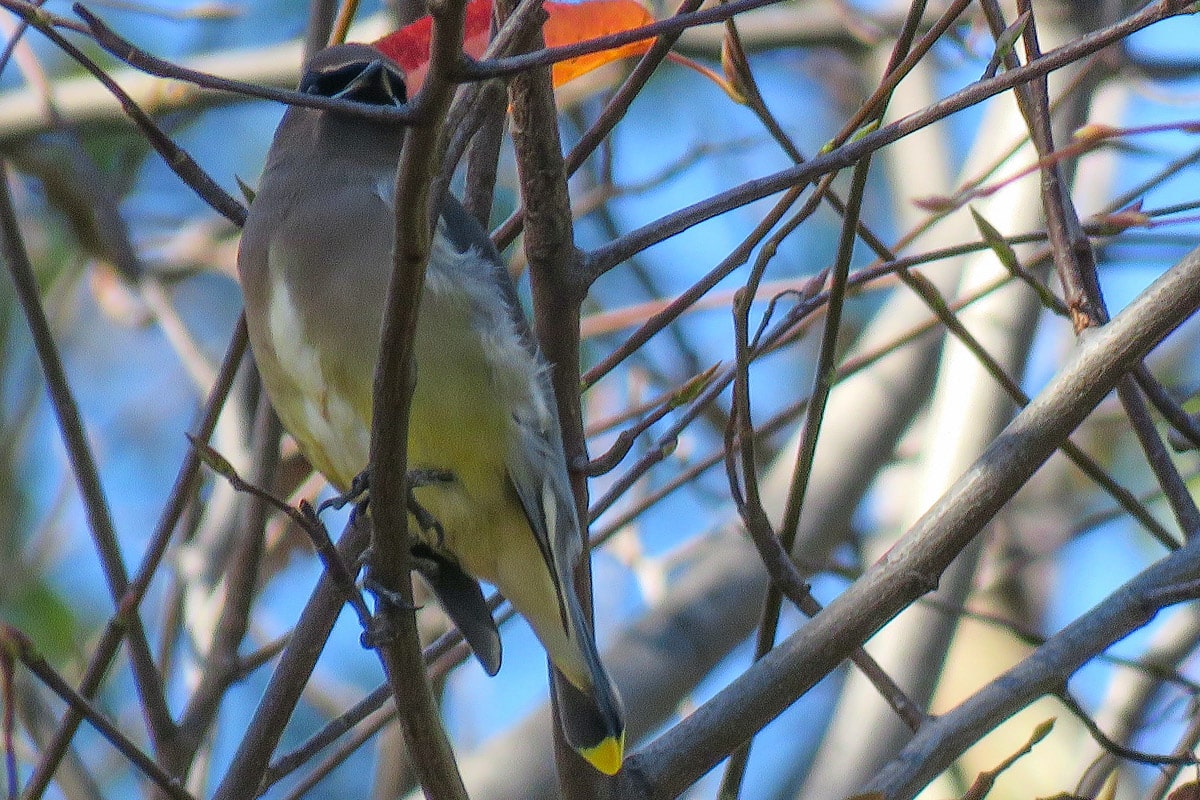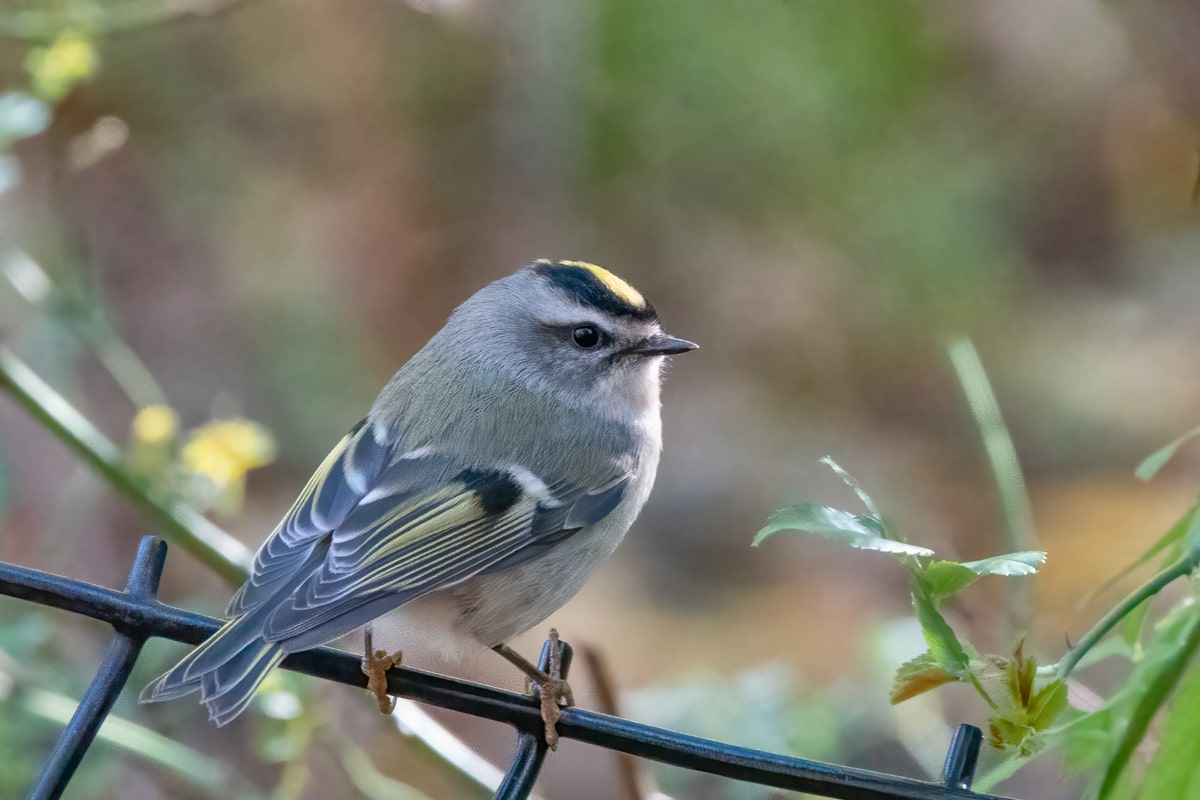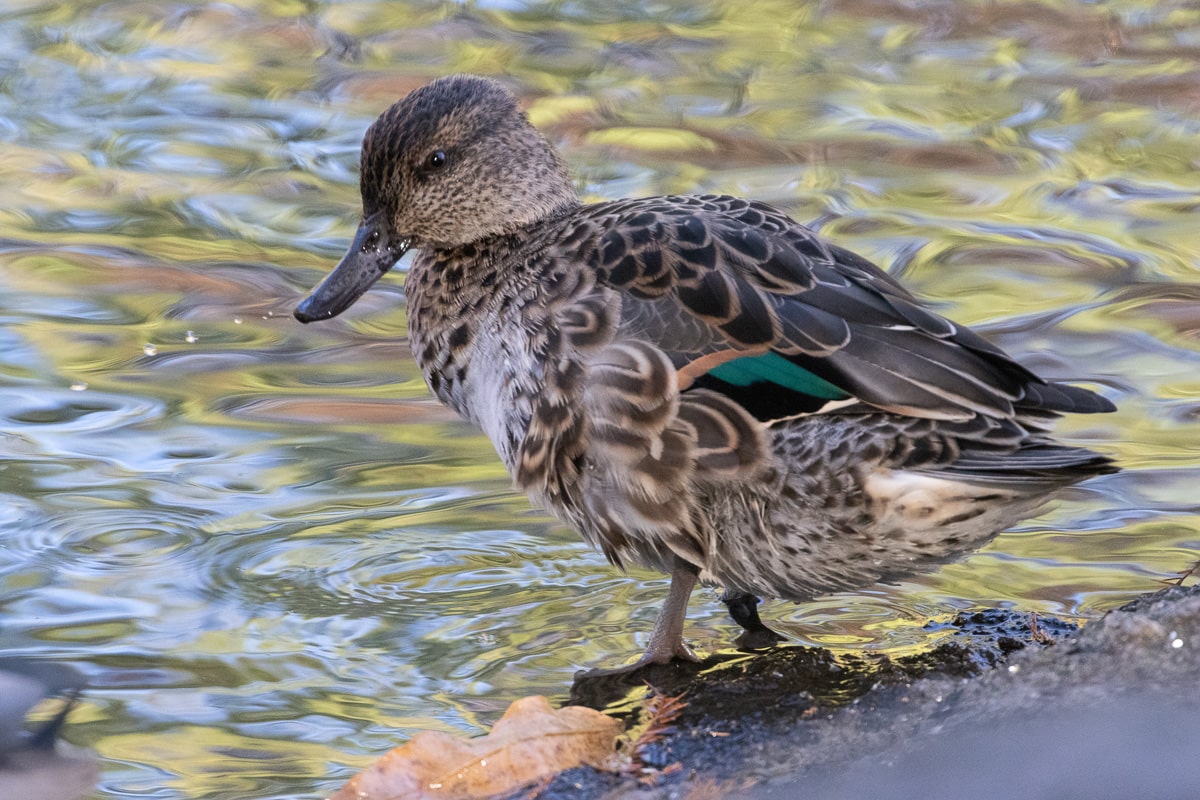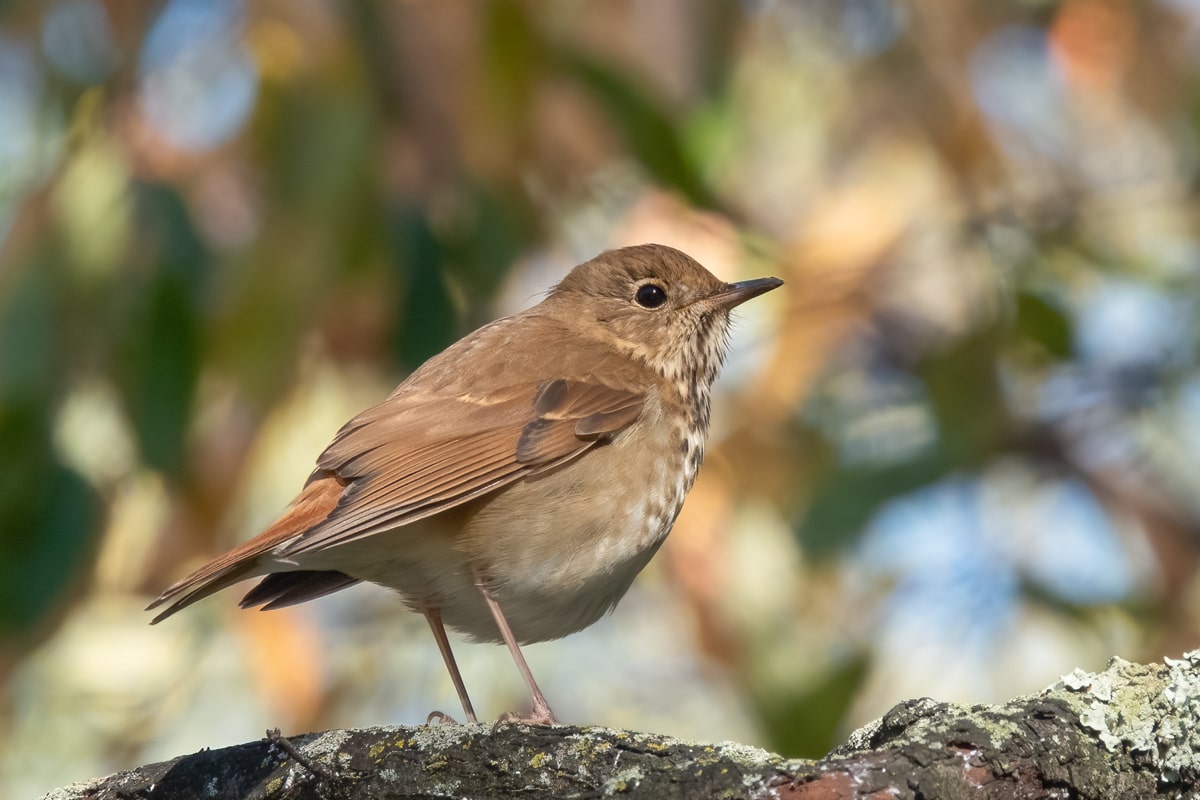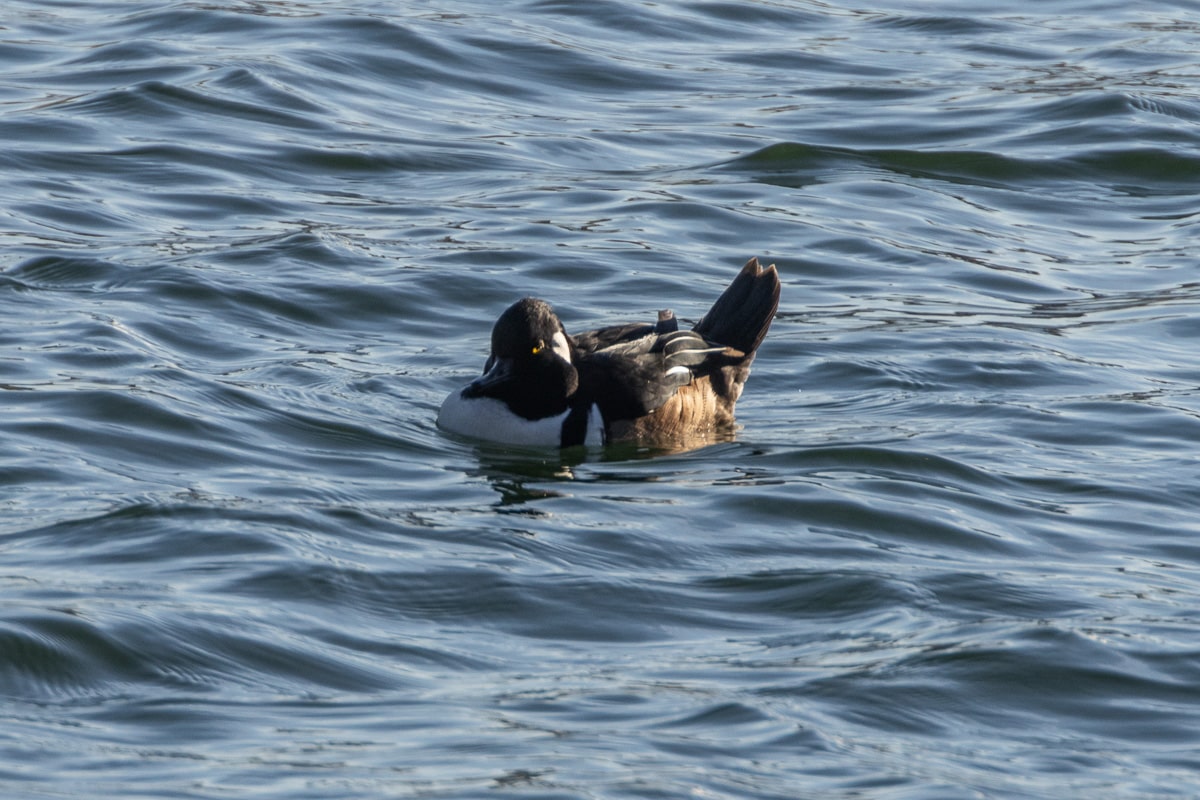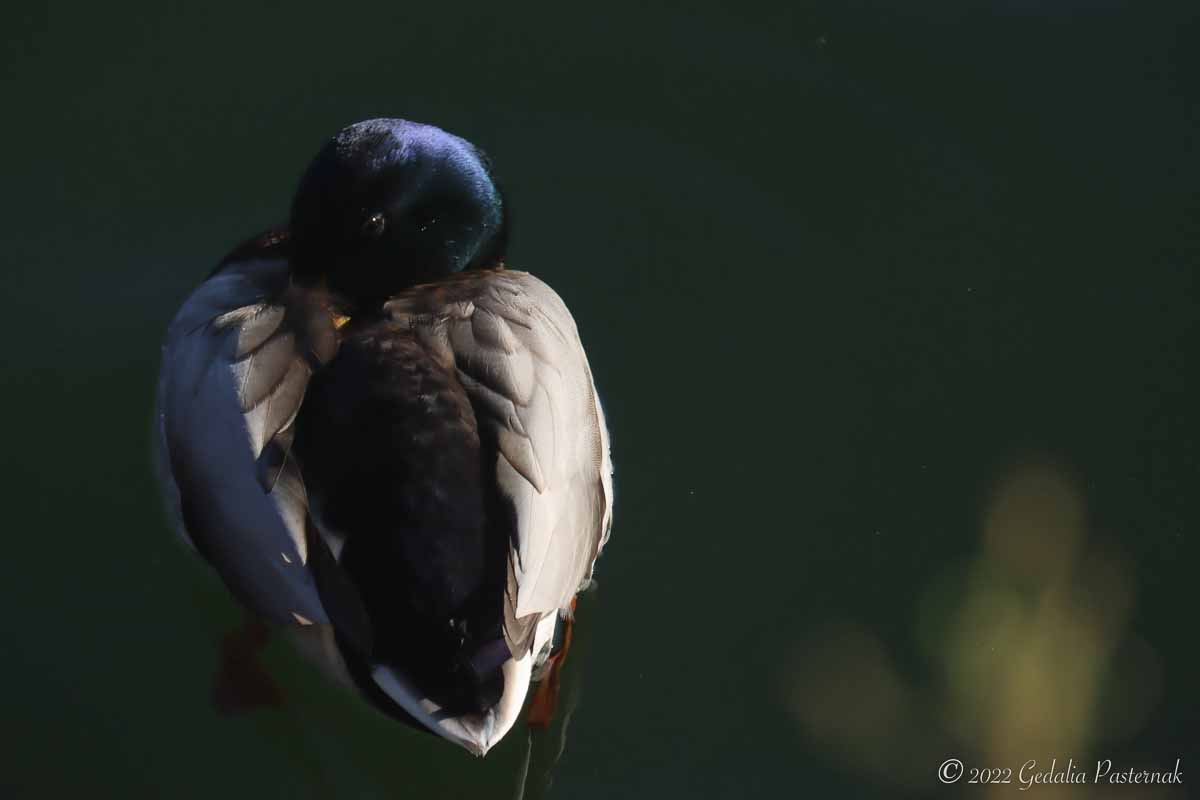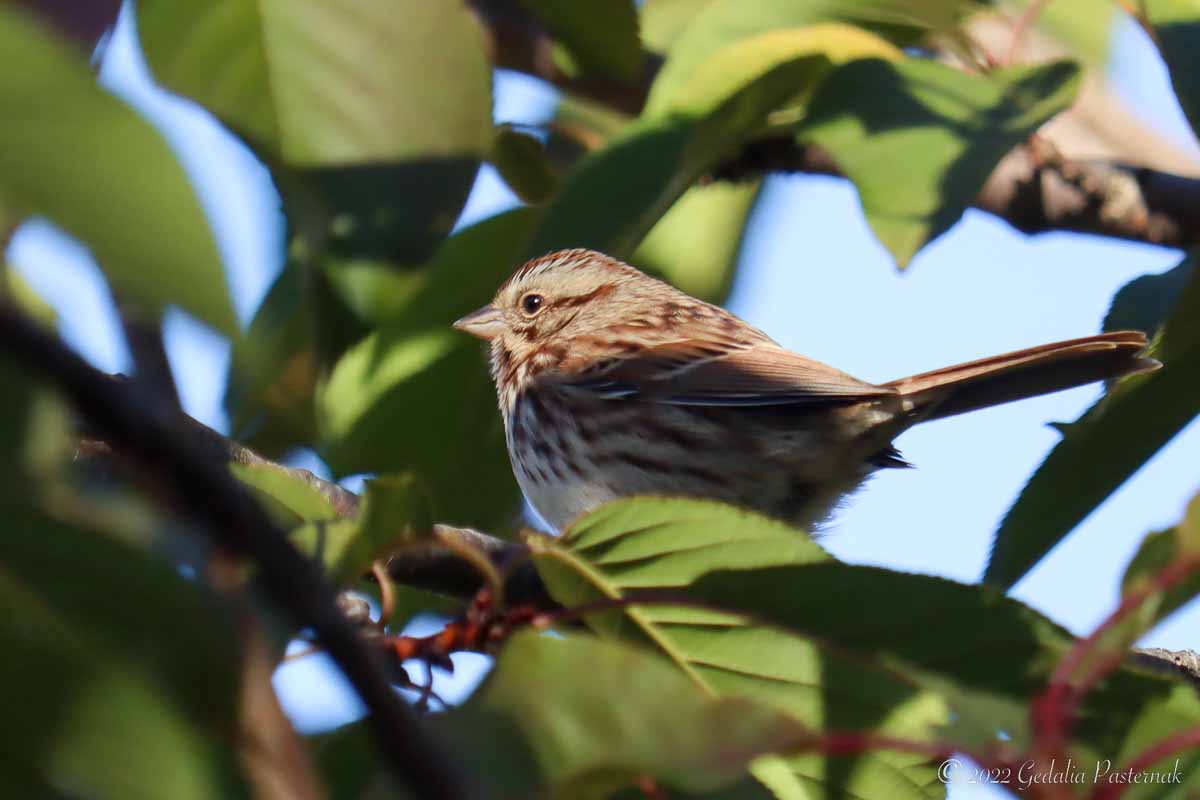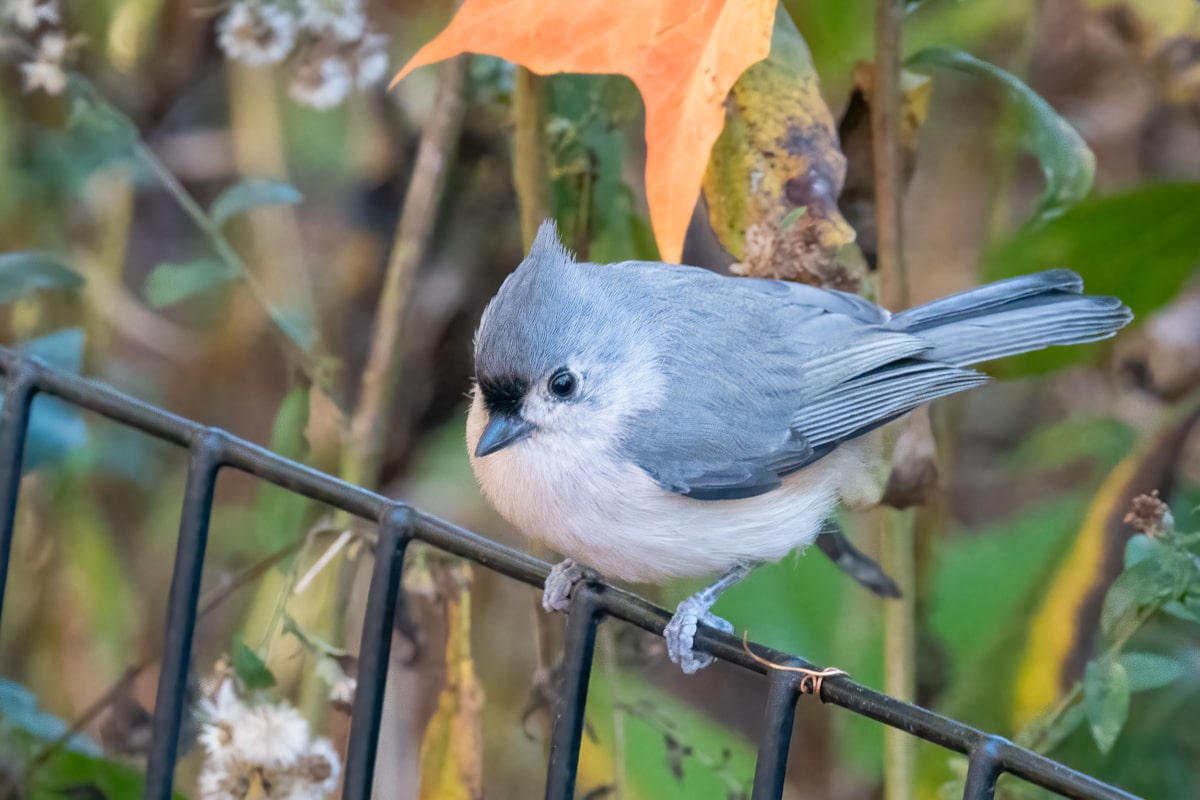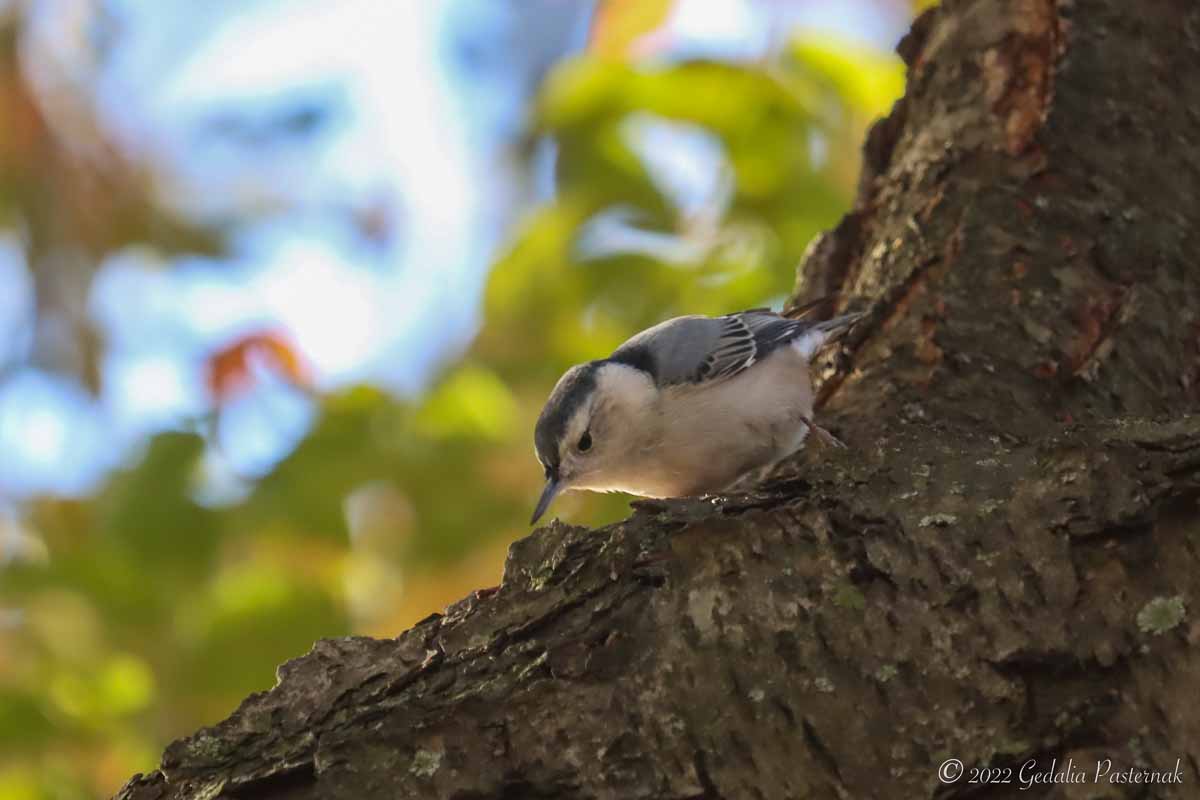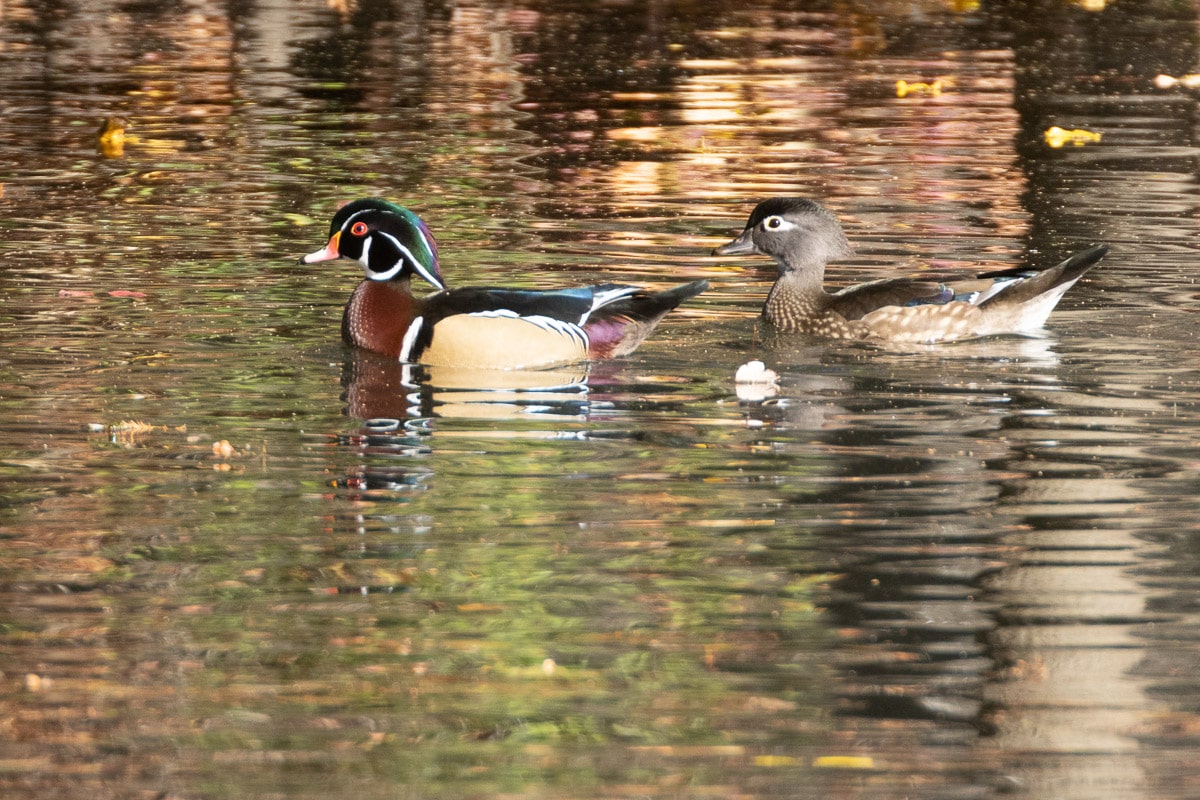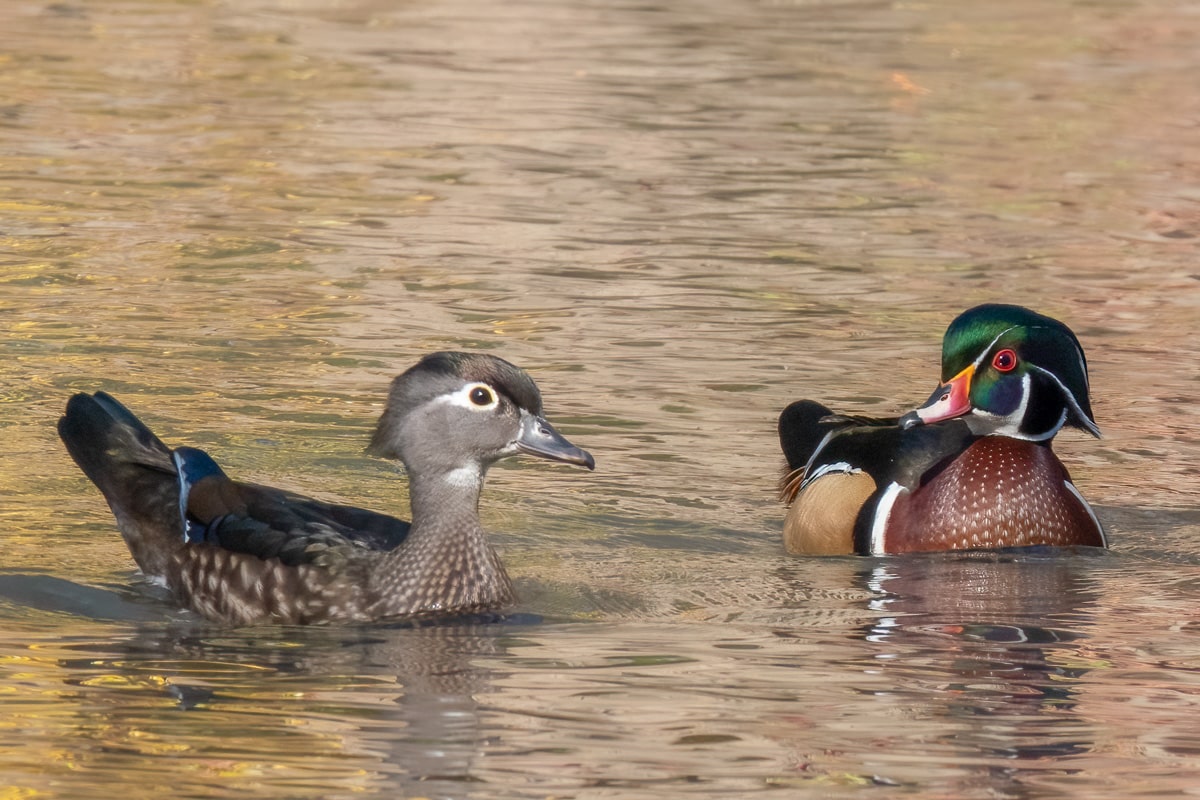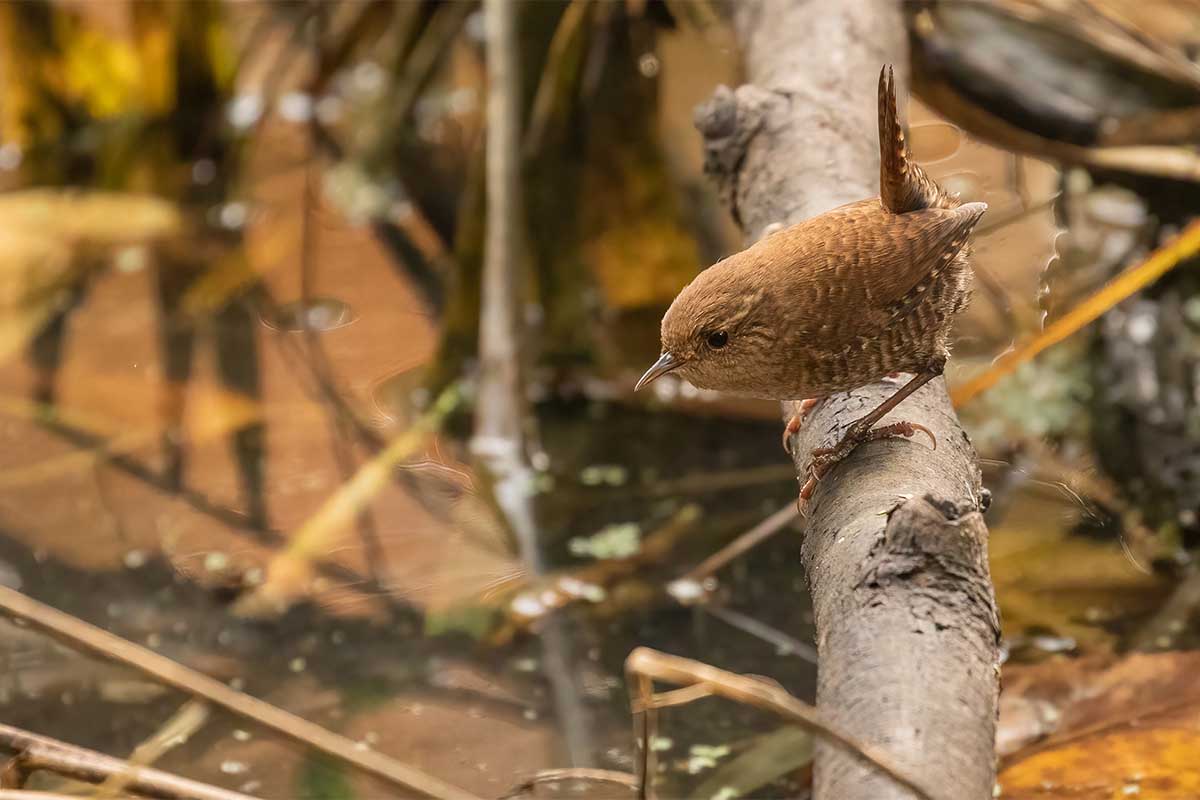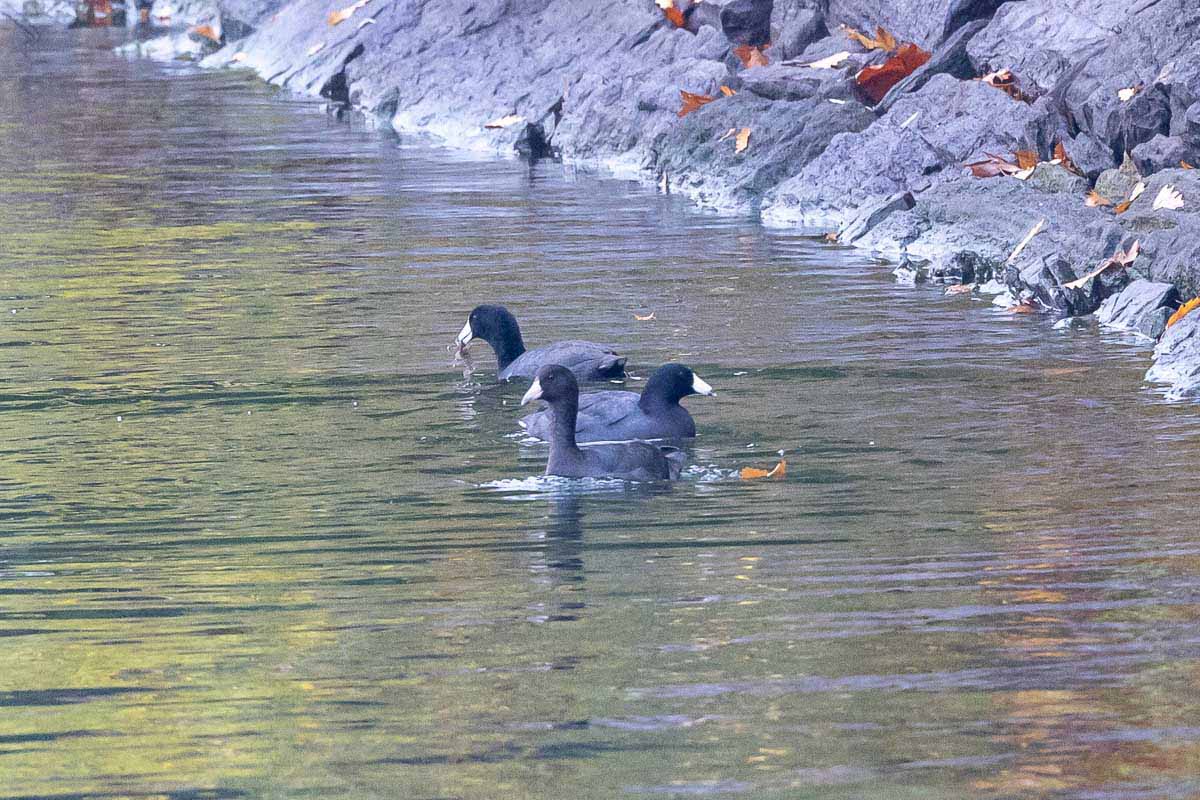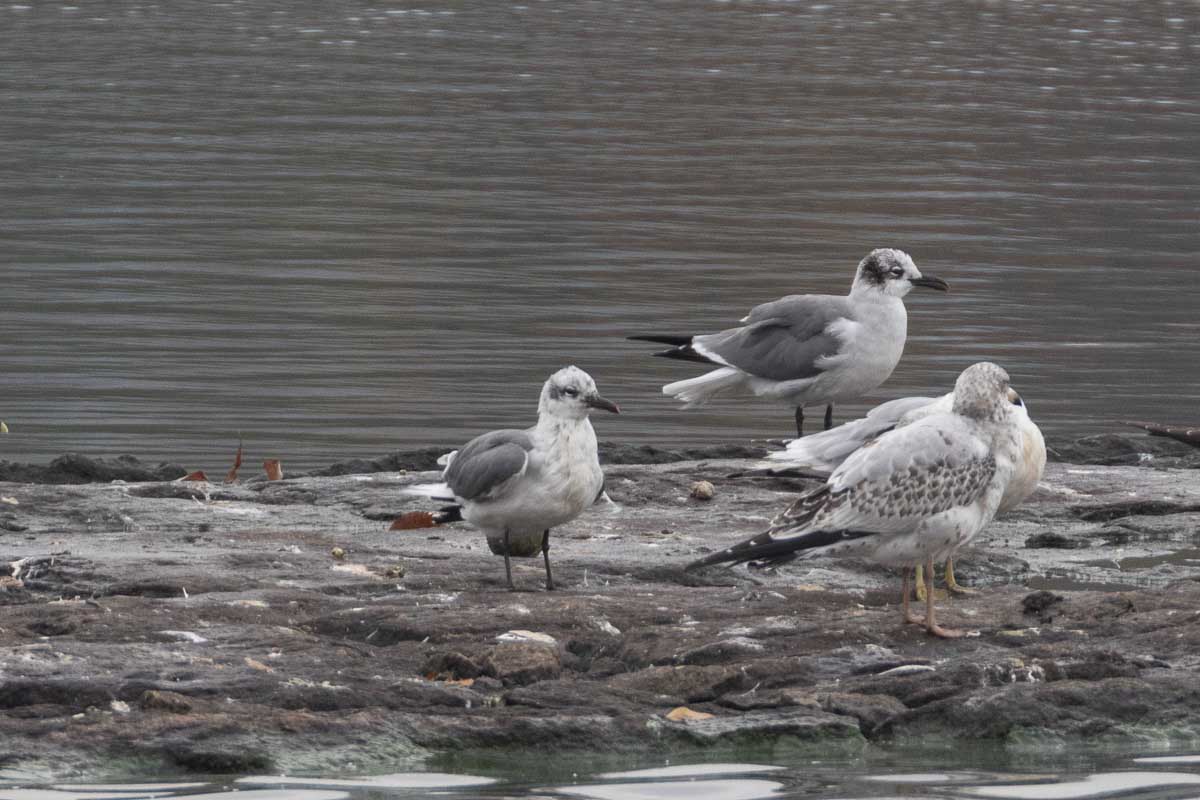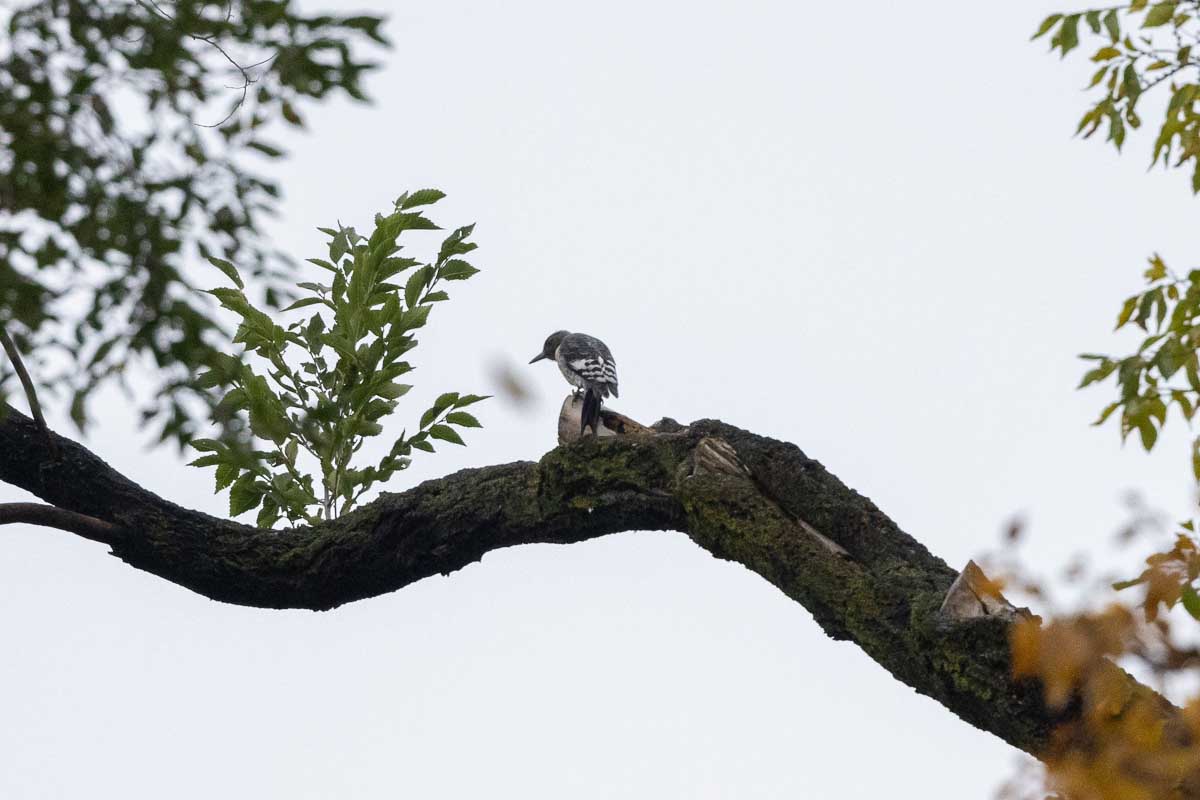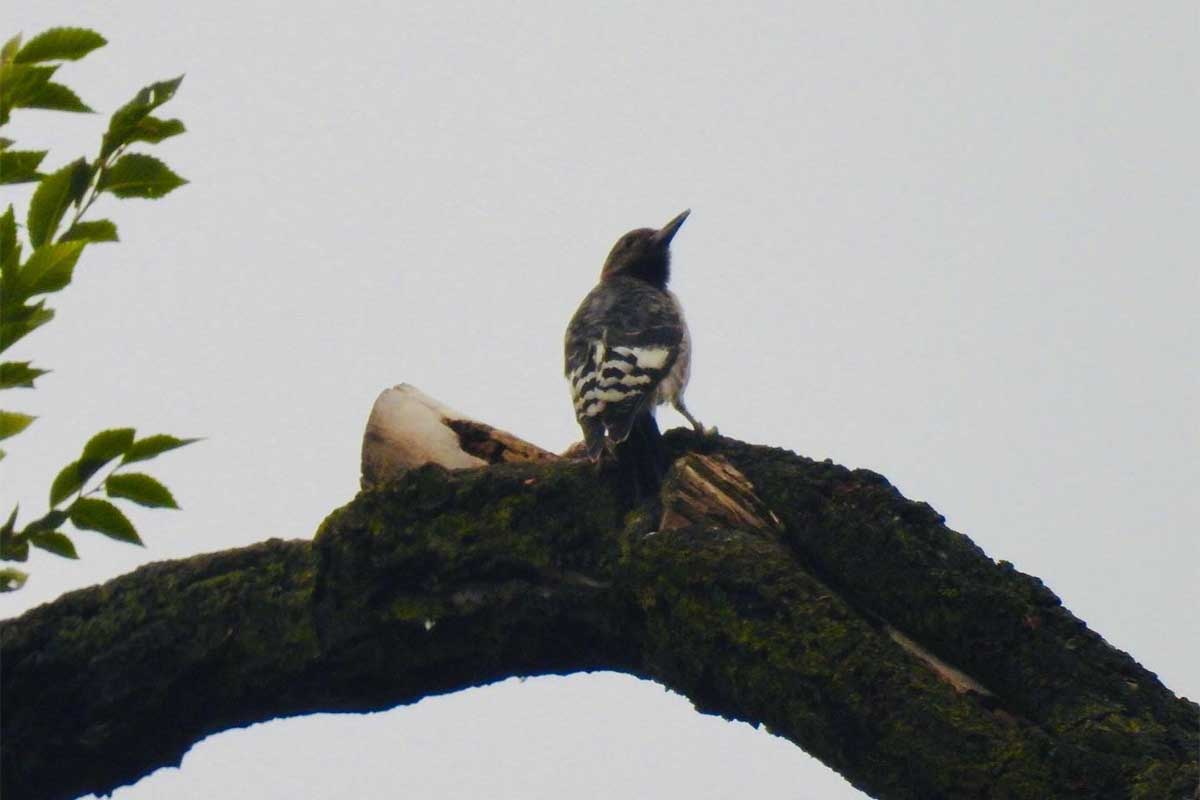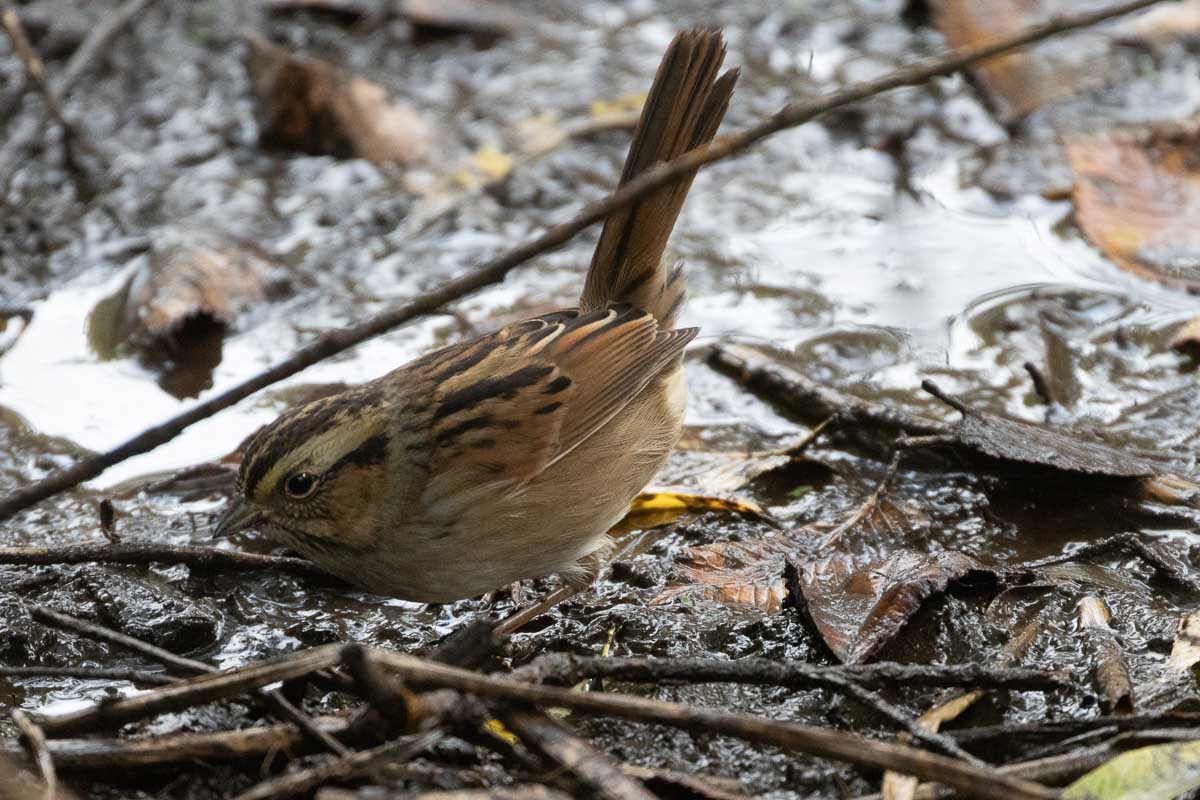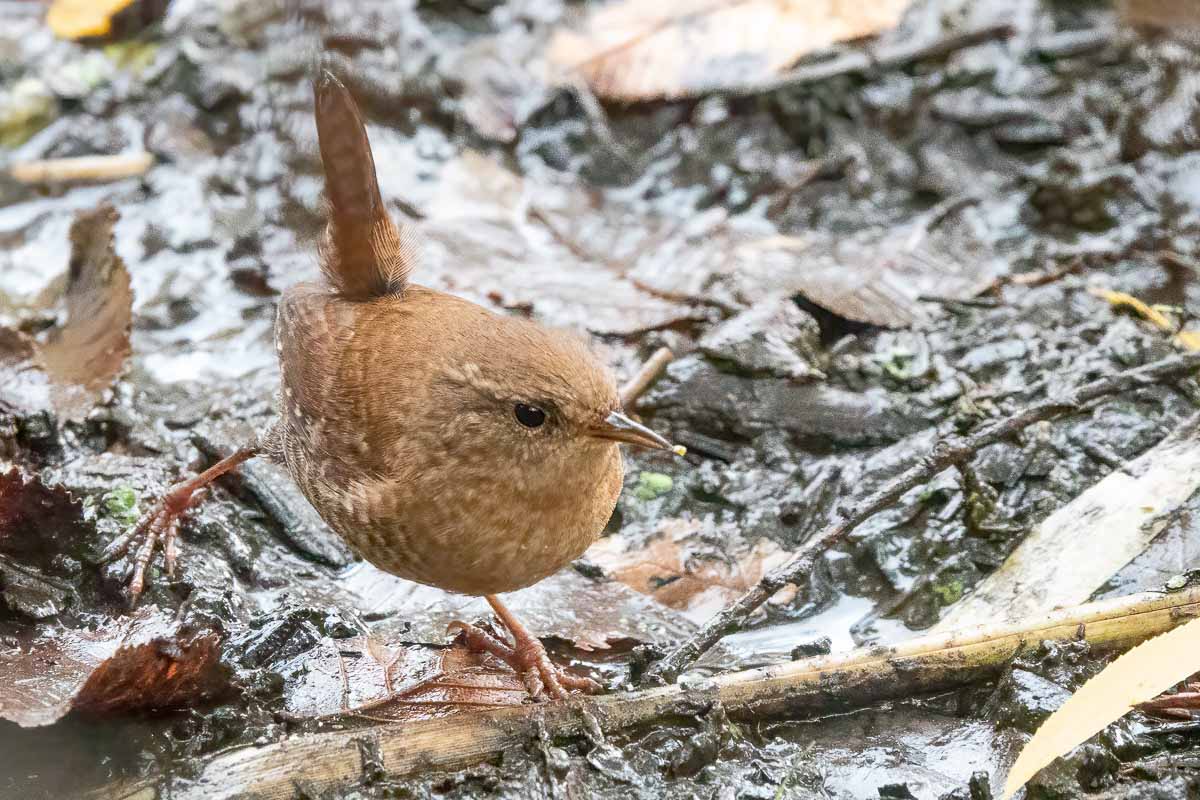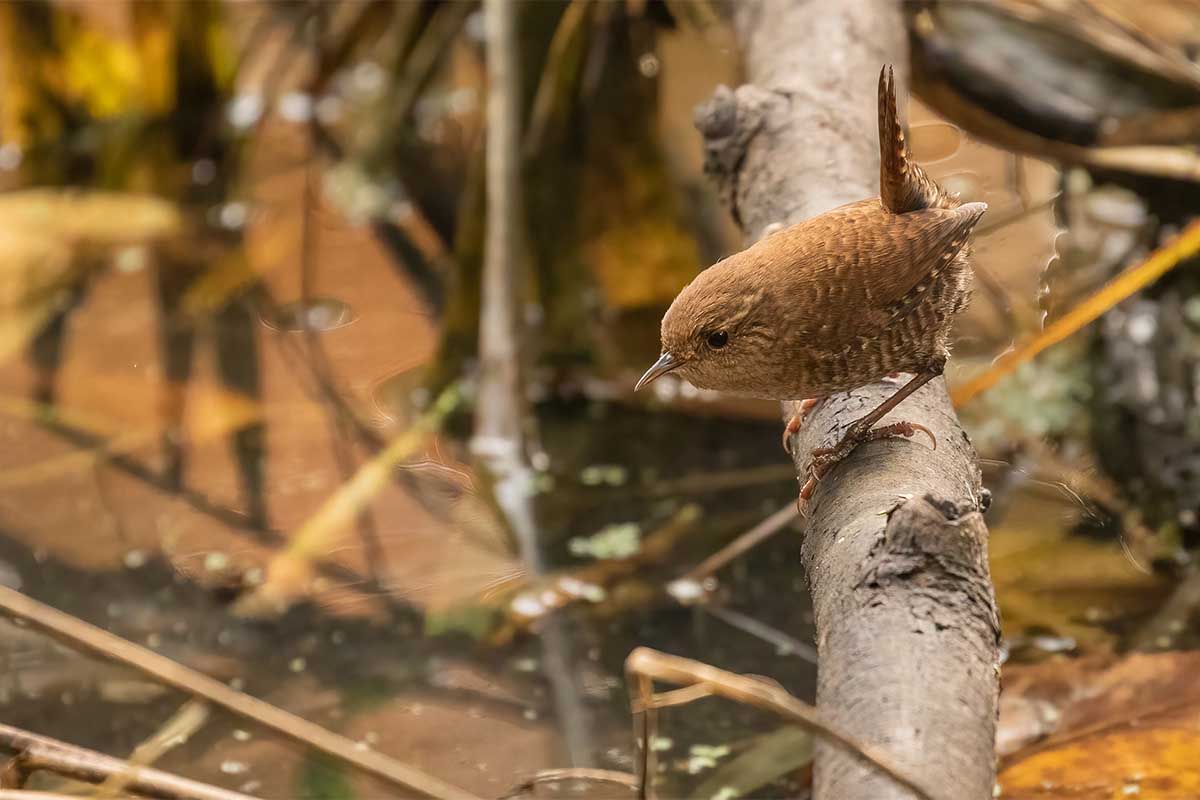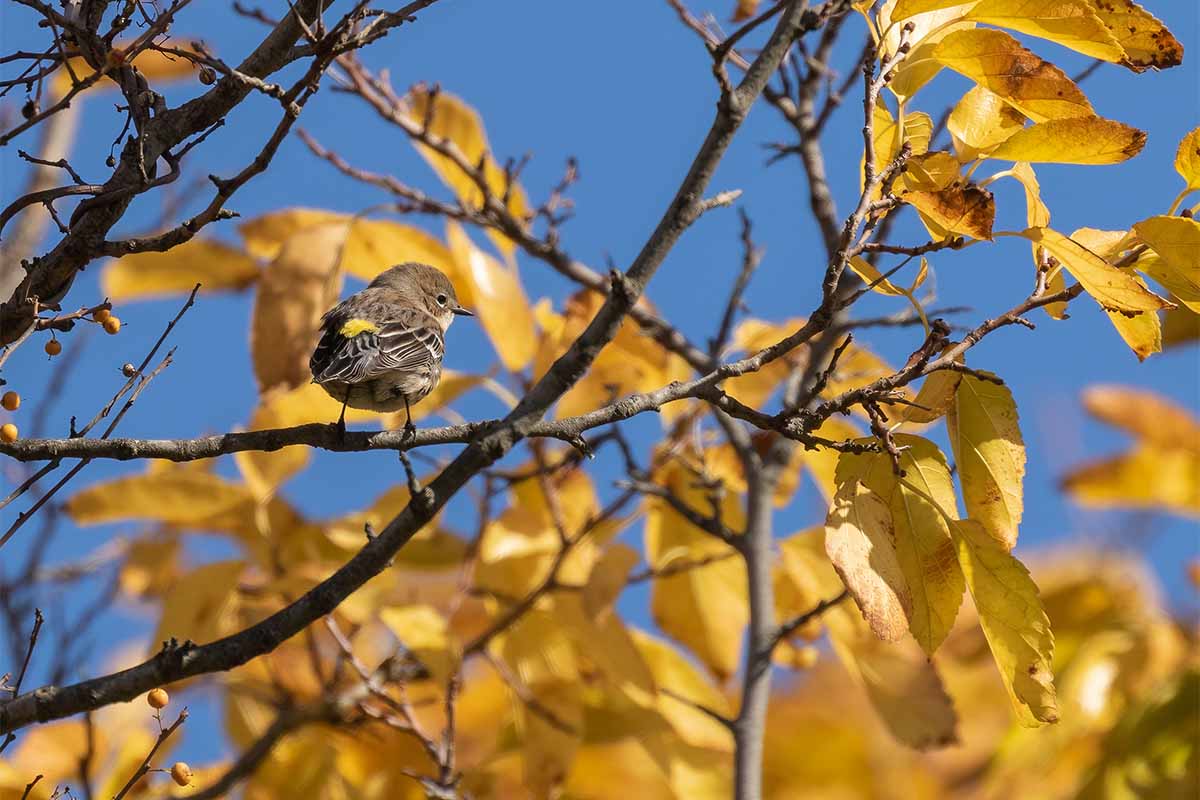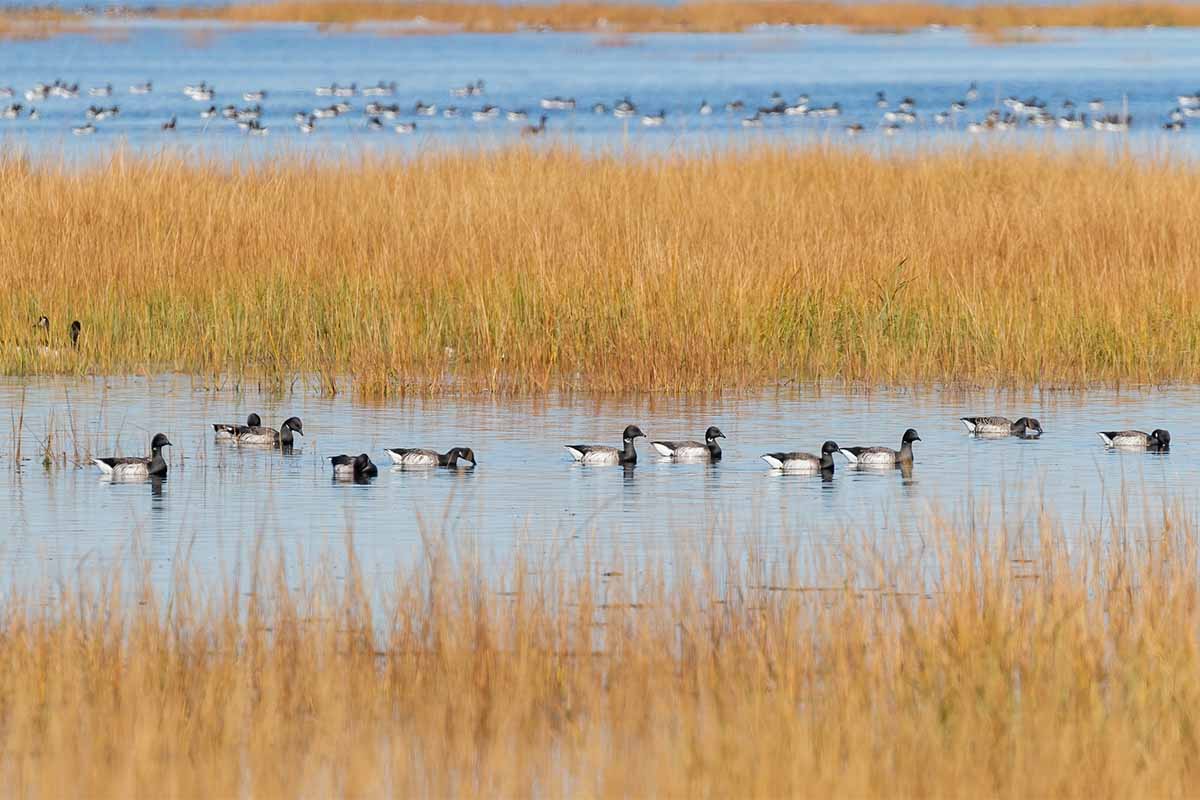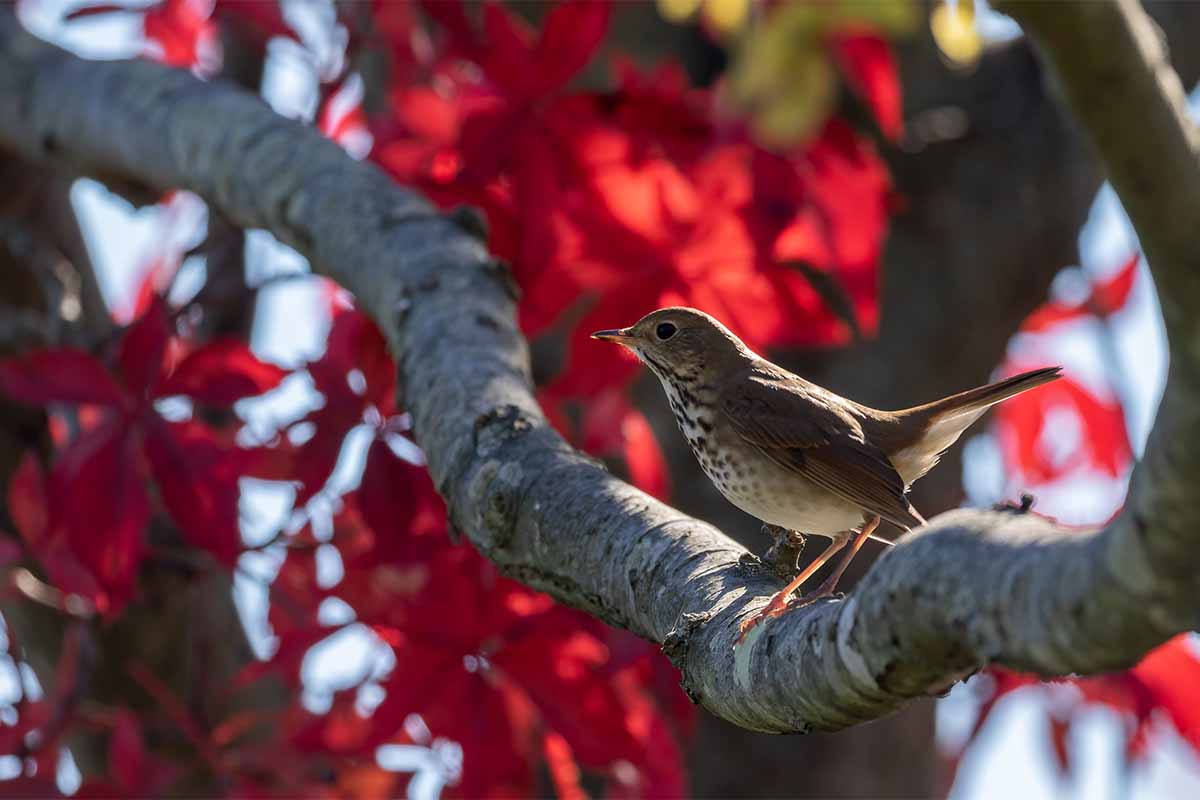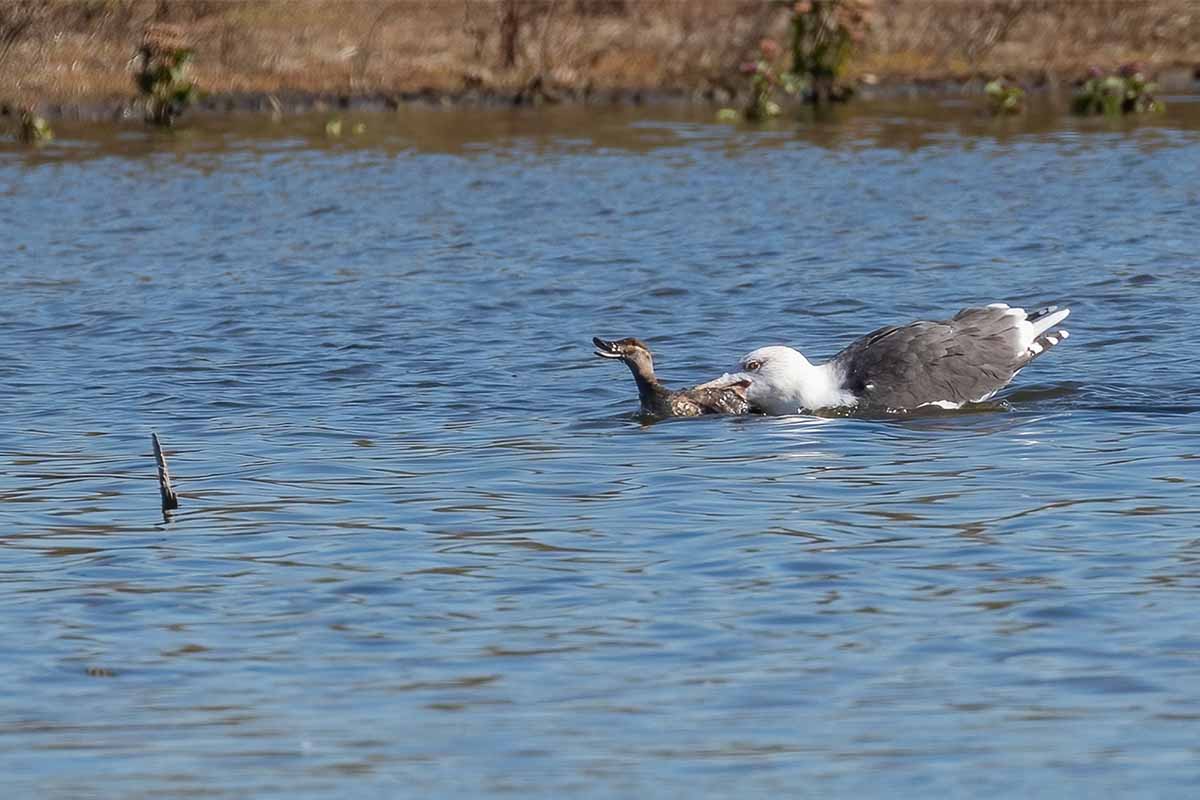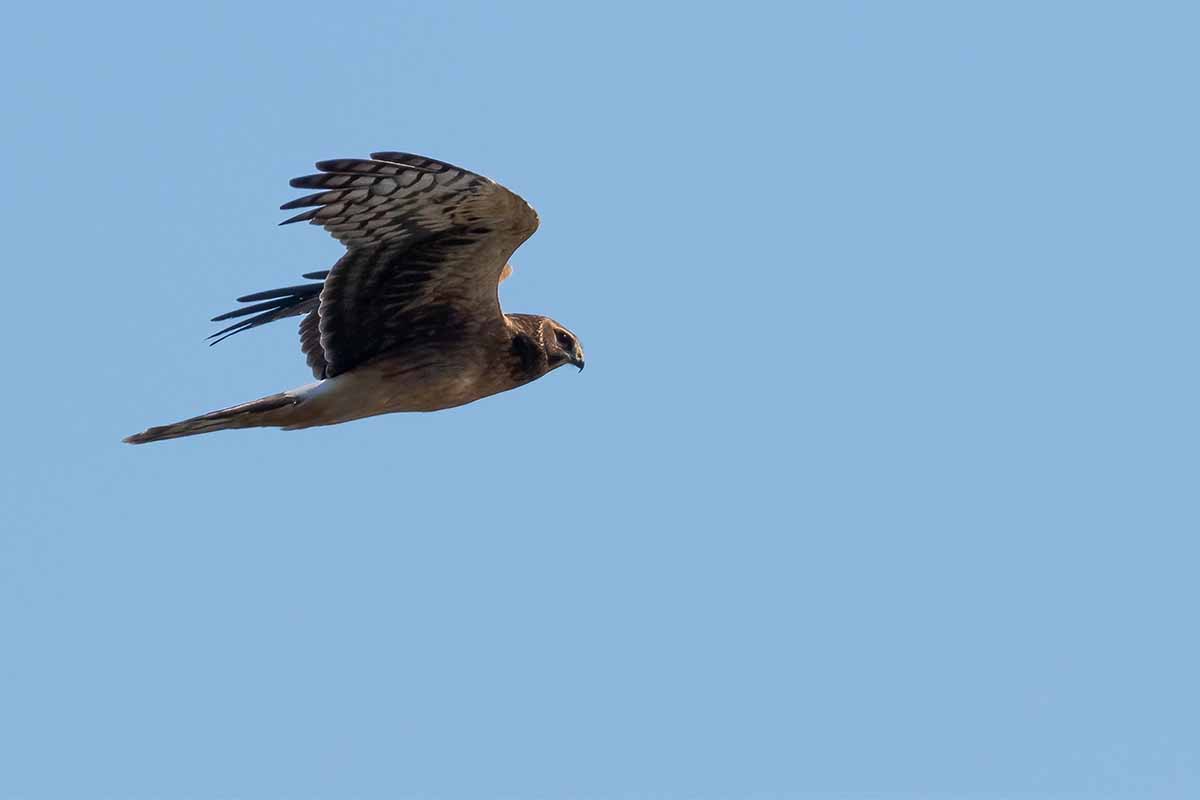Jones Beach with Joe DiCostanzo, 1/8/2023
Registrar: Kathleen Howley
Participants: 16
Weather: sunny 35–40°; winds 6–8 mph
Bird Species: 47
We met at 9 am at the Jones Beach Coast Guard Station, and after scanning the Jones Inlet for the usual wintering species, we meandered along Fisherman’s Road until we got a clear view of the Inlet. Unfortunately, there were a couple of boats nearby with hunters firing at flying birds, aiming especially at Long-tailed Ducks. Most often, the shooters missed their targets, and we did manage to get good looks at Long-tailed Ducks, as well as at a Bonaparte Gull and Common and Red-throated Loons. Afterward, we headed toward the main road to look for a flock of Red Crossbills that had been reported earlier. We were successful in seeing them, and it was a big highlight for everyone.
But then, a little before noon, while we were birding along the Swale, someone mentioned that a Swainson’s Hawk was being seen along Front Street on Staten Island. The leader took a vote, and eleven participants voted to leave Jones Beach and head to Staten Island. Below you will find two lists, the first one of the birds seen at Jones Beach and the other of the birds seen at Staten Island. All in all, many of us never dreamed that we would start our day on Long Island and end up on Staten Island. But all’s well that ends well.
Species Lists
Birds
Jones Beach
Brant
Canada Goose
Mute Swan
Mallard
Greater Scaup
White-winged Scoter
Black Scoter
Long-tailed Duck
Bufflehead
Red-breasted Merganser
Red-throated Loon
Common Loon
Double-crested Cormorant
Rock Pigeon
Sanderling
Dunlin
Razorbill
Bonaparte’s Gull
Ring-billed Gull
Herring Gull
Great Black-backed Gull
Downy Woodpecker
Hairy Woodpecker
American Crow
Red-breasted Nuthatch
American Robin
Northern Mockingbird
European Starling
Cedar Waxwing
House Sparrow
House Finch
Red Crossbill
American Goldfinch (h)
Song Sparrow
White-throated Sparrow
Yellow-rumped Warbler
Northern Cardinal
778 Front St., Staten Island, NY
Gadwall
Greater Scaup
Bufflehead
Common Goldeneye
Bonaparte’s Gull
Herring Gull
Bald Eagle
Swainson’s Hawk (Juv.)
Fish Crow
Common Raven
